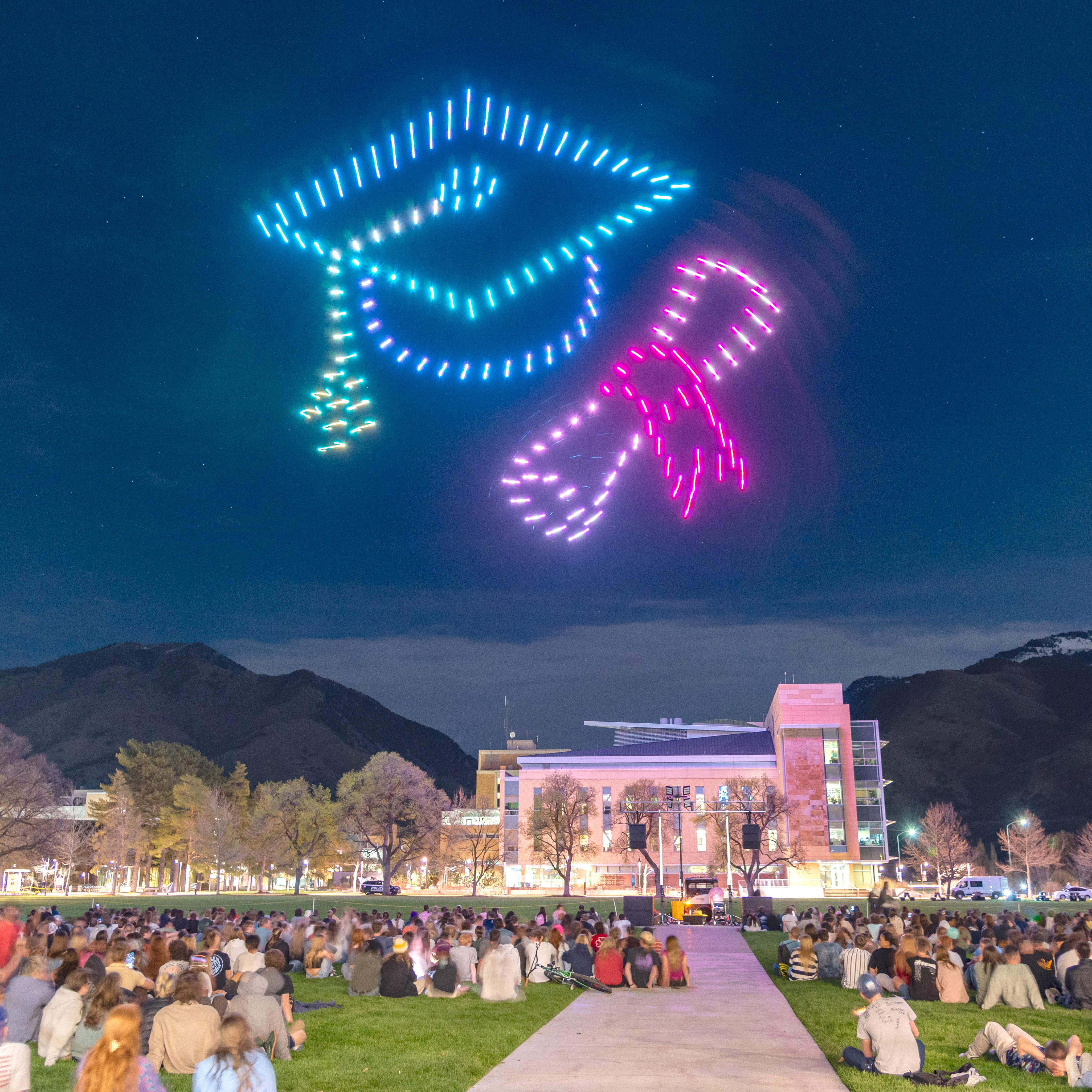




By Emma Shelite STATESMAN REPORTER
Former USUSA President Matt Richey hosted a student town hall on April 16 to address rising concerns about college restructuring, program cuts and faculty changes stemming from House Bill 265, a controversial piece of legislation passed during Utah’s 2025 General Session of the 66th Legislature.
HB265 mandates a system-wide reallocation of instructional funding across Utah’s public universities. It directs institutions to evaluate academic offerings, reduce duplication across campuses and prioritize programs with high return-on-investment, commonly referred to as “high-yield programs,” which include those with strong career placement rates or higher post-graduate earnings.
“Natural resources has sections of clubs. Do you know how that’s going to be impacted?” asked Anna Hansen, sophomore studying forest ecology, at the town hall.
According to Richey, HB265 does not target auxiliary areas such as student clubs, athletics or student event funding, despite misconceptions.
“Athletics are largely self-supported,” Richey said. “They receive limited state funding, and what little they do receive isn’t the focus of this bill. The state has asked us specifically to focus on instructional costs.”
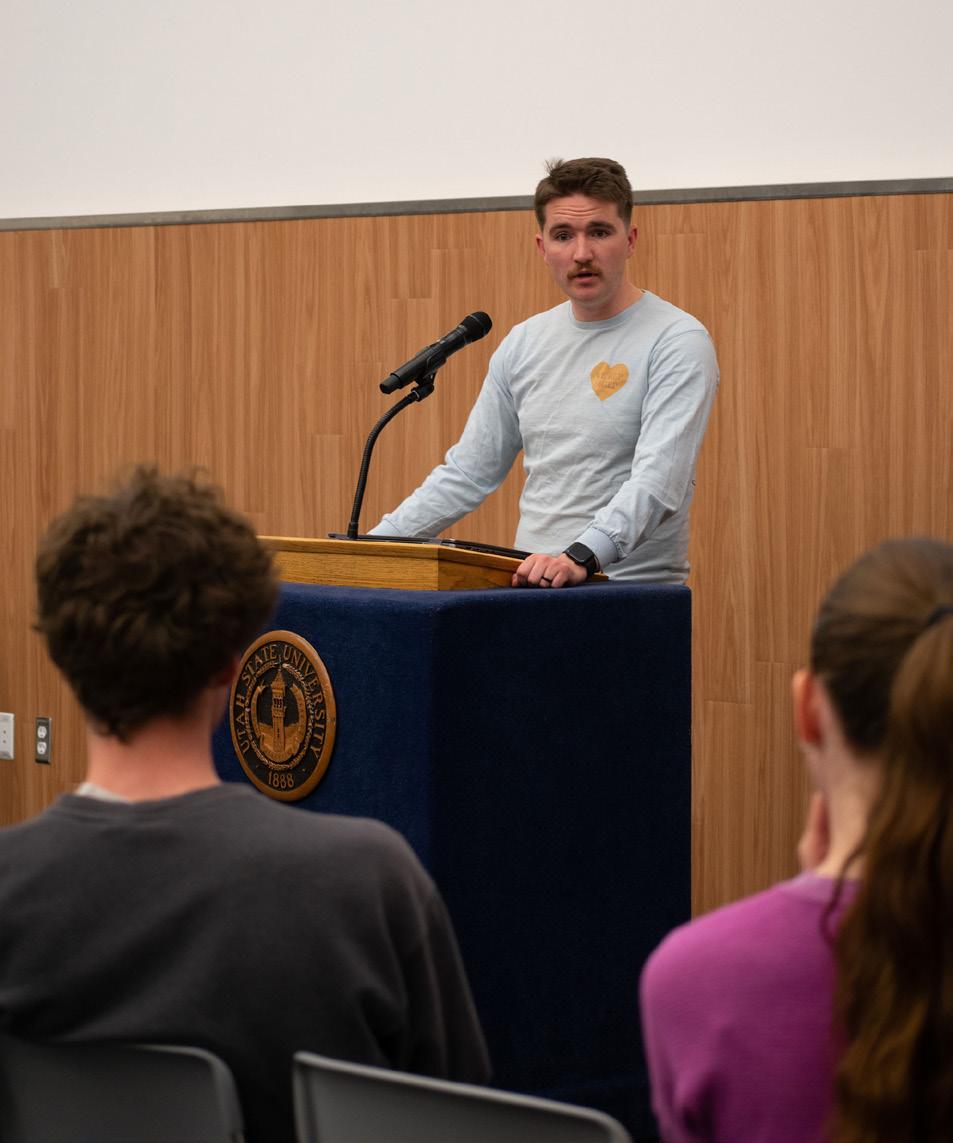
The law’s primary aim is strategic reinvestment. By phasing out or consolidating low-enrollment or low-demand programs and streamlining college administration, universities are expected to reallocate resources toward disciplines that align with current labor demands, both regionally and nationally.

To achieve this, HB265 imposes a two-year “teach-out” period for programs slated for closure. This ensures students close to completing their degrees can finish on time. Year one allows for 70% of the original funding, and year two allows 30%, with no additional state support for those programs beyond that point.
USU must submit its initial reallocation plan to the Utah System of Higher Education on May 1. That plan will be reviewed to prevent system-wide overlap — a key goal of HB265 is to ensure statewide access to a broad range of programs without excessive duplication at every institution.
Richey acknowledged many students feel concerned about the future of their departments, professors and campus identity — especially those in colleges directly affected by mergers, such as the Quinney College of Natural Resources and the College of Humanities and Social Sciences.
“There’s real emotional weight to these changes, but community identity comes from people — not names,” Richey said. “That part of USU isn’t going anywhere.”
He added USU Interim President Alan Smith has been committed to transparency. An FAQ page has been launched on USU’s website to address common questions, and the USUSA Instagram account @usustudentassocia-
tion will provide ongoing updates, including answers to questions from the town hall.
“I want to know if there’s going to be any changes to student resources like SNAC [Student Nutrition Access Center] or the Career Design Center,” said Jack Burton, multimedia editor of The Utah Statesman, at the event.
Richey responded, saying most non-instructional services are funded through private donations or student fees, not state appropriations.
Richey also addressed concerns about staffing. While faculty reductions are possible, especially where programs are consolidated, he cautioned against speculation until the university finalizes and releases its plans.
With the recent election of new USUSA officers and the impending arrival of a permanent university president, Richey expressed optimism about the leadership transition and his efforts to onboard 2025-26 USUSA President Brandon Sorensen.
“We’re spending a lot of time together preparing,” Richey said. “He’s meeting the right people — getting the full picture — and he’s already asking smart questions.”
When asked whether HB265 and its fallout could make it harder to attract a permanent president, Richey was confident USU remains an attractive institution.
“Candidates for this role look five, ten years ahead, and our recent accreditation went very well,” Richey said. “There’s a lot here to be proud of.”
As the university navigates these unprecedented changes, Richey encouraged students to stay informed, remain engaged and reach out directly.
“This is about people,” Richey said in closing. “And USU’s people — our students, our faculty, our staff — that’s what makes this place special. And that’s not going away.”
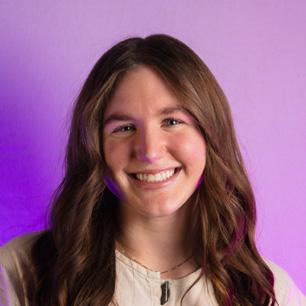
Emma Shelite is a junior pursuing a bachelor’s degree in communications and journalism. Her writing is fueled by Dr Pepper and an extroverted personality. Outside of the newsroom, she is passionate about cooking, athletics and her love for dogs.
— emma.shelite@usu.edu
By Alici Archibald STATESMAN REPORTER
On April 12 at 11 a.m., Utah State University students and staff gathered with Students United for Reproductive Freedom, or SURF, on the Quad for the “Walk A Mile In Her Shoes” event.
The event was spearheaded by SURF co-presidents Eloise Hales and Bridget Ackroyd.
“This event specifically was about sexual assault awareness. We wanted something for people to come together and recognize that as unpleasant as it is, it is a reality, and the more that we can destigmatize that, the easier it is for survivors to come forward and know they’ll be supported,” Ackroyd said.
Walk A Mile In Her Shoes was held in honor of Sexual Assault Awareness Month.
According to Hales, SURF aimed to show solidarity and support to the women and survivors in the community through this event.
“Bringing awareness to sexual assault is extremely important to me. I believe anything helps to take away the shame from survivors,” Hales said. “I think that shame and guilt need to be placed back on the perpetrators, and when we have events like this and people are gathered together, it shows we are united for a cause, and that starts taking away the shame from the victims.”
Students and staff gathered to hear from a CAPSA representative who spoke about survivors and what can be done to support them. Afterward, they walked a lap around the Quad, some wearing heels to symbolize their support.
“Heels are uncomfortable,” Hales said. “It’s to stand in solidarity and commem-

orate the women and men and people around you who have experienced assault.”
The event drew attention from outside of USU, as University of Utah student Michael Wood joined the event. He said the activism from USU students he knew drew him to attend.
“I think, especially as a man, acknowledging the strength of people being able to come out and say they struggle, that they’ve had issues and they need help is really beautiful,” Wood said.
SURF is involved with more projects involving Sexual Assault Awareness Month, including one involving a digital magazine featuring survivors of sexual assault. The magazine will highlight both photoshoots with survivors and exclusive interviews.
Hales said the purpose is to show “we’re more powerful in numbers — any voice counts.”
Another project SURF has been working on includes installing a pharmaceutical and contraceptive vending machine on USU Logan campus.
“We have to definitely make it a yearly thing — make it more something that people can talk about and know that they’re

not going to be shamed and know that survivors should be believed,” Ackroyd.
Both Hales and Ackroyd said they were pleased with the turnout. Hales said even though it may be hard to see instant changes from events like these, “any voice is making a change, even just one person.”
The co-presidents shared what motivates them to be involved with SURF.
“I think just spreading that awareness, especially, dare I say, in a culture where that’s not always encouraged… none of it is dirty or wrong, and I think having comprehensive and inclusive sex ed is what motivated me to get involved in SURF,” Ackroyd said.
Hales is a pre-law student hoping to become a women’s advocacy and human rights lawyer.
“This is something I’ve always had a passion for. It’s just so easy for me to want to get involved and have the strive to help because it’s all I want to do,” Hales said.
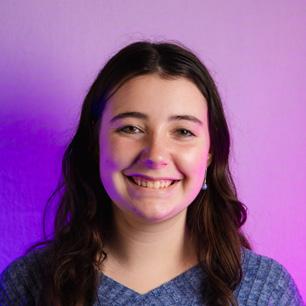
is a junior studying journalism who loves all things related to news. You may spot her playing the trumpet in the Aggie Marching and Pep Bands, watching sports or listening to one of her many political podcasts. — a.archibald@usu.edu


By Lacey Cintron STATESMAN REPORTER
Whether it’s cracking open a can of Coke, grabbing a bottle of water or purchasing a Sprite from McDonald’s, Americans drink and discard billions of single-use beverage containers everyday without a second thought. Under a century ago, this form of consumption was nonexistent.
On April 16, Cody Patton, Utah State University alum and professor of history at the University of Montana Billings, came to the Friends of the Library Lecture Series. His lecture, “Canned History: Beer, Branding, and Waste in 1930s America” examined the American brewing industry.
“The brewing industry was the first to normalize the idea you would consume something out of a container you would use once and throw it away,” Patton said. “Before 1935, if you wanted a soda or a beer, you would drink out of a reusable glass bottle.”
Prior to the 1930s, Americans relied on the reusability of glass bottles. One could purchase a glass of beer or soda for
seven cents, return the bottle and get two cents back — essentially leaving a deposit on the purchase.
“They would wash and reuse these bottles. A lot of these bottles would be used 30–50 times before they were retired,” Patton said.
With the repeal of Prohibition in 1933, brewing companies needed a new way to establish their place in the lives of Americans. On Jan. 24, 1935, the country’s first single-use can of Krueger’s Cream Ale and Finest Beer would hit the shelves in Richmond, Virginia.
“The brewing industry used this container as a vehicle to rehabilitate its image,” Patton said. “They made beer a home beverage and made it easier for people to consume their product at a time when sales were half of what they had been before Prohibition.”
From this point onwards, single-use packaging became standard for brewing, soda and food industries, and consumers shifted from reusability to convenience.
“As you move from the 1960s into the 1970s, single-use throw-away containers are now the norm in the United
States,” said Elmore Bartow, professor of history and faculty member in the Sustainability Institute at Ohio State University, who also spoke at the lecture. “There’s no longer a price associated with the packaging.”
“The beer can normalizes this idea that consumption is convenient and fun and we don’t have to think about the back end of it,” Patton said. “Steel and aluminum are valuable resources — these are the things we make airplanes out of. All of the sudden, we’re using it once for a beverage and then just throwing it away. When you step back and think about it, that doesn’t make sense.”
Plastics make up a huge portion of single-use products, from water bottles and plastic bags to soft drink containers and straws.
“Plastics became a really exciting option because plastic production exploded in the post-war era,” Bartow said. “It was a lightweight material, and it didn’t break.”


Lacey Cintron is majoring in psychology. She loves learning about the human mind, sharing stories and naps.
— lacey.cintron@usu.
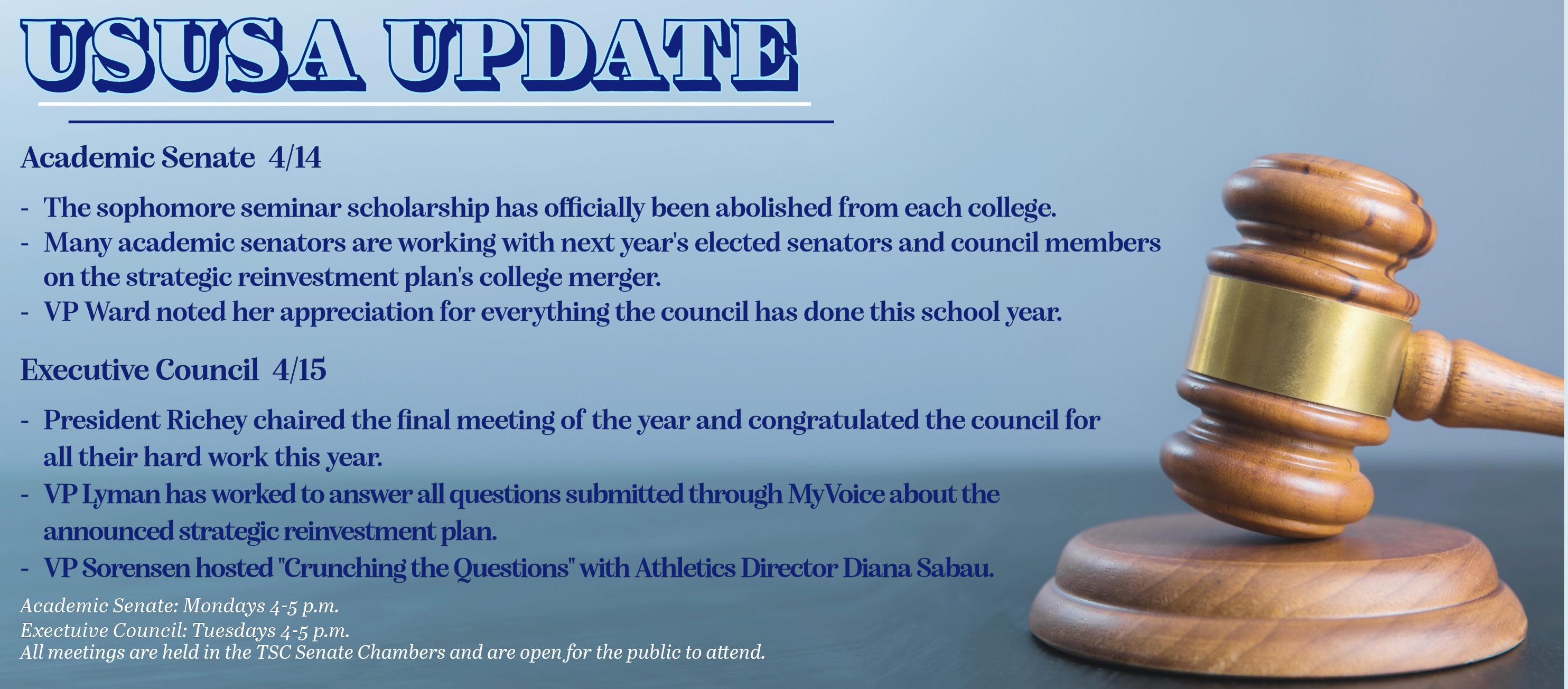
By Brook Wood STATESMAN REPORTER
The Watershed and Fish Habitat Improvement Project is transforming more than just the flow of Summit Creek in Smithfield Canyon. According to its organizers, it’s shaping the future of ecological restoration in northern Utah through collaboration, education and community engagement.
Led by Joe Wheaton, watershed sciences professor in the Quinney College of Natural Resources at Utah State University, the low-tech process-based restoration effort is aimed at reviving stream ecosystems long deprived of natural structure in Smithfield Canyon.
Woody debris jams and beaver dam analogs have a profound ecological impact, according to Wheaton. These simple interventions slow water flow, restore wetland conditions, improve habitat diversity and increase the watershed’s resilience to flood, fire and drought.
“A lot of these streams have been starved of this sort of structure,” Wheaton said. “When they don’t have a lot of wood in there or a lot of beaver dams, they tend to flow and drain very efficiently, but then that also desiccates and drains these valley bottoms.”
To remedy this, students, volunteers and professionals alike gathered on April 12 to maintain beaver dam structures and improve overall stream health at the creek. The project is part of a capstone course for undergraduate seniors and master’s students in ecosystem restoration, giving them hands-on experience in field design and implementation.
“They have assessed and designed a restoration treatment,” Wheaton explained. “They’re directing the efforts today, which includes both maintaining previous structures and building new ones.”
Christina Waddle is in the one-year master’s program for ecological restoration and was one of the students at the event.
“I’ve learned a lot more about how to use the tools and what it actually looks like putting the structures in and
meeting in different materials,” Waddle said. “With the class, I’ve gained a lot of experience with how to analyze data — how to look using a GIS [Geographic Information System] or even Google Earth to figure out what your plan is going to be and how you put the structures in.”
Scott Catton, project manager for Trout Unlimited — a non-profit that works to protect, restore and sustain cold-water fisheries and their watersheds — talked about broadening horizons when it comes to stream restoration techniques.
“There has been lots of variations on how people tackle streams that might need a little bit of assistance to get back to acting naturally, and this low-tech process-based restoration is an interesting way to go about it, mimicking how nature would take care of things and kind of just letting the stream do the work and relying on native natural vegetation,” Catton said.
Catton emphasizes the importance of getting out in the field and how projects and volunteer opportunities such as this one are a great way to get hands-on experience. He took the capstone course online and came out to Smithfield for the implementation project.
“I got to meet a lot of people from all over the country in person, which has been great,” Catton said, “And getting to talk to people from various organizations and different backgrounds has been really cool because it kind of just brings a bigger perspective to the work that we’re doing.”
Tyler Coleman, the project’s on-the-ground volunteer coordinator and representative from Trout Unlimited, has been key to mobilizing community involvement.
“I really see the value in engaging volunteers, especially local folks who care about these streams,” Coleman said. “When you come out here, see the trout habitat improving, see more water being held in the landscape — you’re not just fixing a stream, you’re investing in the future.”
Volunteers come from diverse backgrounds, including professionals making a career shift, agency representatives and even international participants.
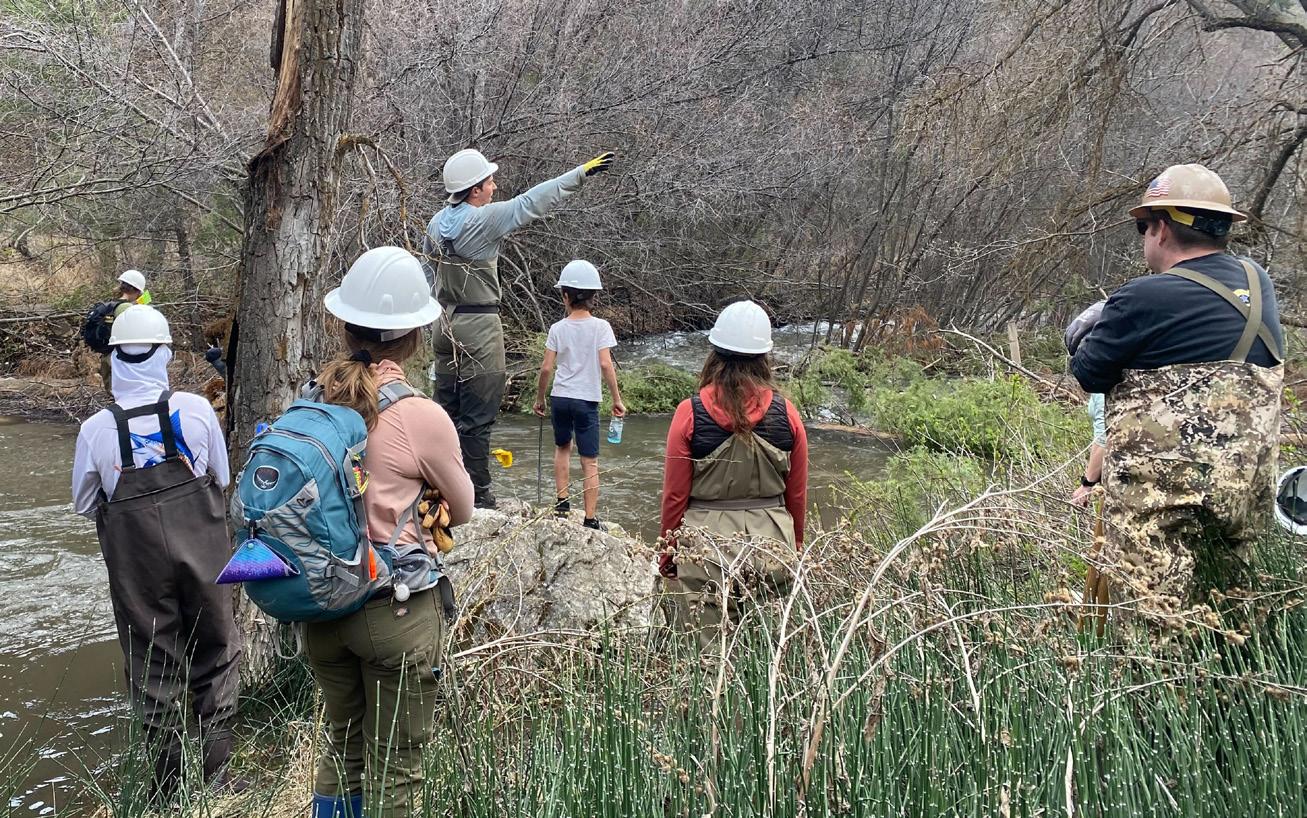
“We actually have some volunteers from France today,” Wheaton said. “They’re hoping to bring these techniques back home and work with water agencies there.”
The project doesn’t just train future scientists and land managers — it also connects with local communities, according to Coleman and Wheaton.
“We’ve got families out here with their kids — one of the coolest things this year is seeing a seven-year-old help pick a site for a wood jam,” Coleman said. “It’s awesome how intuitive it can be. You don’t need a Ph.D. to know where the water wants to go.”
Wheaton said projects such as these are simple ways to make long-lasting differences for the environment, and volunteering is an easy way to contribute.
“We’ve got a seven-year-old, we’ve got a nine-year-old and we’ve got a four-year-old,” Wheaton said. “The seven-year-old had a better eye than half these people with high degrees for where a structure should go because this literally is just child’s play — you’re throwing stuff in the creek — but it makes a big difference.”
The project works to create many positive ecological impacts, including improving diverse habitats with better water retention in these landscapes.
“For bugs, frogs, elk, moose — everything benefits,” Wheaton said. “And for humans, holding water longer improves flood protection and drought resilience.”
With the recent uptick in national wildfires, this sort of restoration work creates less risk by maintaining water flow in places that usually dry up during dry seasons and drought years, according to Wheaton.
“With all the bad news — fires, floods, climate change — it’s easy to feel overwhelmed,” Wheaton said. “But this shows that we can do something. This is one of those projects where everyone walks away feeling like they made a difference.”
Projects such as low-tech process-based restoration are being done to support stream habitat for trout, which gathers interest from Trout Unlimited, the Bureau of Land Management and the US Forest Service. This volunteer event was even sponsored by Texas Roadhouse, which provided the team with free barbecued lunch.
“It’s a global movement, but it’s not top-down,” Wheaton said. “It’s all bottom-up. We’ve done over 50 workshops like this. It’s spreading in Canada, the UK, France, New Zealand — this work is taking hold because it’s simple, effective and inclusive.”
Coleman emphasized getting involved and volunteering to gain more experience and help benefit the environment. More information can be found on USU watershed sciences’ and Utah Trout Unlimited’s Instagrams @usu_wats and @utahtroutunlimited.
“The land gives back when we take care of it,” Coleman said. “The people — whether they’re scientists or sevenyear-olds — are what make that possible.”

Brook Wood is working towards receiving a bachelor’s degree in literature. When they aren’t writing or reading, they enjoy playing the violin in the USU Symphony Orchestra and the occasional sweet treat.
By Essence Barnes STATESMAN REPORTER
Students got their hands dirty for a good cause during the Native Utah Seed Planting workshop on April 14, the first of many hands-on activities hosted at Utah State University as a part of the annual Earth Week celebration.
“Earth Week is a decently old Utah State University tradition that my position has historically planned,” said Ella Leonelli, USU’s student sustainability engagement lead in the Christensen Office of Service and Sustainability and Earth Week organizer. “Through different events and activities, we try to educate students on different ways that they can be sustainable without feeling overwhelmed or like they need to break the bank.”
In this simple and affordable workshop, students crafted biodegradable seedling pots using sustainably sourced materials — all from the comfort of the TSC. Along the way, they learned about the ecological importance of native gardening and how composting can help support a sustainable planet.
“I wanted to do everything local, everything compostable and of course, everything native,” said Kate Anderson, COSAS student lead of USU Harvest Rescue and organizer of the event.
To stress the importance of sustainable sourcing, Anderson and her team collected donated toilet paper rolls for the pots, compost from the university garden for the soil and blue flax seeds from Cache Valley Native Plants for the plants.
“I’m specifically using blue flax seeds because they are native to northern Utah,” Anderson said.
Anderson’s decision to use native seeds wasn’t just about keeping things local but about highlighting the vital role native plants play in fostering more resilient, sustainable environments.
“Native plants have established relationships within their local ecosystem,” Anderson said. “They’ve adapted to their environment, and they’ve adapted to their animals.” Blue flax plants are biologically engineered by nature to thrive in Utah’s hot summers and cold winters. When they thrive, other organisms in the environment depending on them thrive as well.
“Animals and pollinators depend on these [native plants,] and if those are gone, then those species won’t have places for food or habitat,” Anderson said. “It would just destroy the ecosystem.”
Unlike exotic plants that often require additional watering and artificial fertilizers to grow successfully, growing and upkeeping native plants is cheap and easy.
“Once they’ve been established, they don’t need any more watering other than regular rainfall,” Anderson said. “They’ll go great in the yard, they won’t become invasive and pollinators will be attracted to them.”
Students didn’t just walk away from the workshop with their own native seedling plants but with a new outlook on sustainability and how small changes can make large impacts.
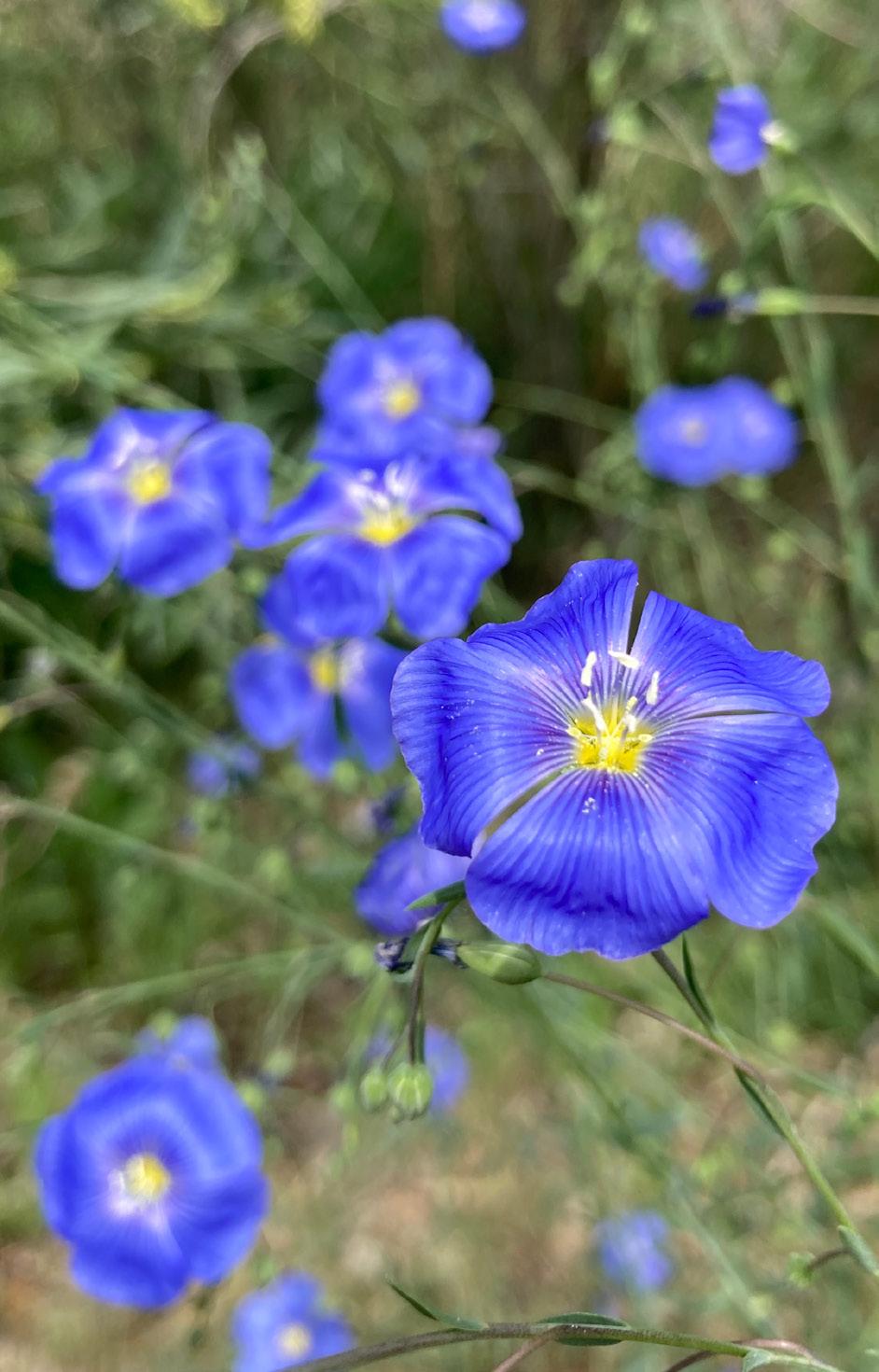
“Activities like this just show how easy it is to be sustainable and make a difference,” said Eliza Bonzo, junior studying family consumer sciences. “The whole activity took like five minutes tops, and we’ve already made a start on a change, and I think that’s super cool.”
Other students appreciated the creative, low-cost approach to sustainability.
“I think there’s kind of an idea that making sustainable choices is really hard and really expensive,” said Lauren Knox, senior studying economics, data and finance. “Especially for college students who are on a budget, this is really applicable.”
Several attendees said the workshop was a good way to spread awareness about the importance of ecosystem biodiversity among students.
“A lot of people aren’t born in an environment where they can learn about the world and how native plants work and how our ecosystem works in general,” said first-year student Lily Allen. “A big part of college is getting your degree but also understanding life more, and you can’t do that without learning about all of this.”
The event highlighted the university’s growing commitment to providing students with ample opportunities for environmental awareness and action.

“We have so many fun and very unique events at Utah State, but a lot of them center around the students and what the students want rather than being centered around making an impact sustainably,” Leonelli said. “I think it’s really important that we show it is possible and it is something that everyone can do.”
The workshop was only one part of a larger effort to get students involved in sustainability during Earth Week and beyond.
“What I’m really hoping students take away is an educated understanding of one, the impact of what they plant, and two, the impact that they can have in the future,” Leonelli said. “We can make a difference, we can do something and there is a way for us to make an impact even past college.”

Essence Barnes is a second-year student majoring in journalism and minoring in environmental studies. She enjoys reading, writing and caffeine.
— essence.barnes@usu.edu
By Samantha Isaacson STATESMAN REPORTER
Utah State University hosted its annual End of Year Bash on April 11, giving USU students a chance to have one last party before leaving for the summer.
The sun shone as people gathered in and around the TSC and George Nelson Fieldhouse. The beginning featured free food trucks at the TSC bus loop and a bounce house festival in the Fieldhouse.
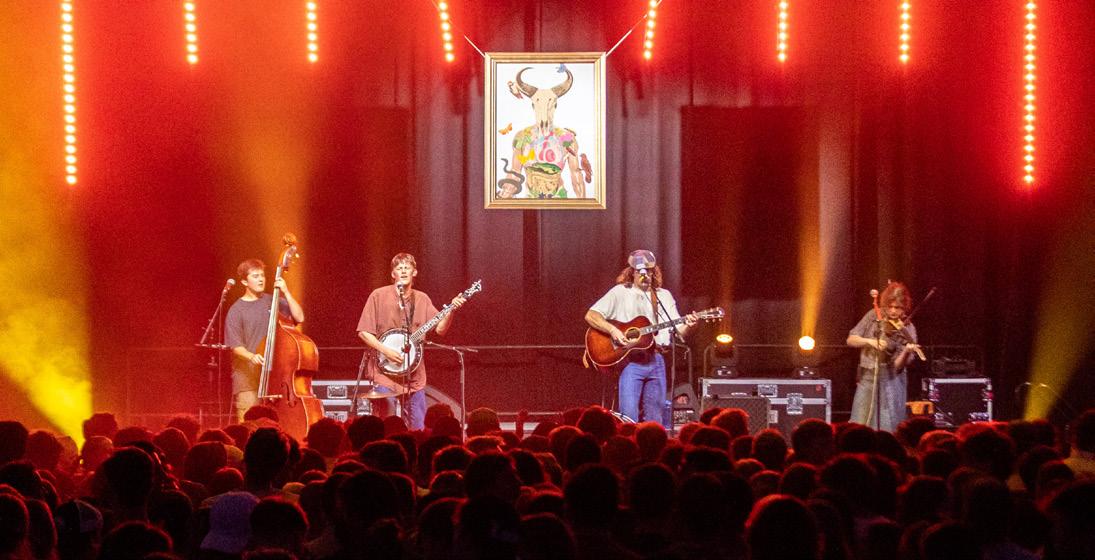
Dallin Higgins, junior in business management, was one of many students who attended.
“I love the End of Year Bash. I’ve been attending this event since my freshman year,” Dallin Higgins said. “It is probably the best event besides the Howl because it has free food — free activities — and it’s right when the weather starts warming up and it’s nice to be outside again.”
Piper Higgins, junior in the nutrition science and pre-dental programs, said she feels the event is important for everyone at USU.
“I think this event is perfect for the seniors and everyone else,” Piper Higgins said. “It helps get everyone outside and celebrate after being stuck inside for so long. It gives people a chance to wake up after winter.”
The second part of the event was a concert with two stages in the TSC Evan N. Stevenson Ballroom and Sunburst Lounge. Utah bands Sunhills, Lovingly Clad, CAYSN and The Last Wild Buffalo performed along with Aggie Voice winner Swetha Bharat.
Kate Peterson, senior studying journalism and video manager for Bluelight Media, said she feels the event really brings students together and showcases how USU is special.
“It’s like the grand finale of all of the events on campus, and it kind of sets Utah State apart from other college campuses in my opinion,” Peterson said. “It’s really important for students to attend events like this because it helps them build relationships, make memories and be connected with the university and each other.”
Lydia Harris, graduate student studying social work, said she feels the event gives students something to be excited about.
“I think the End of Year Bash is great because it keeps people coming back to USU and it brings in a great
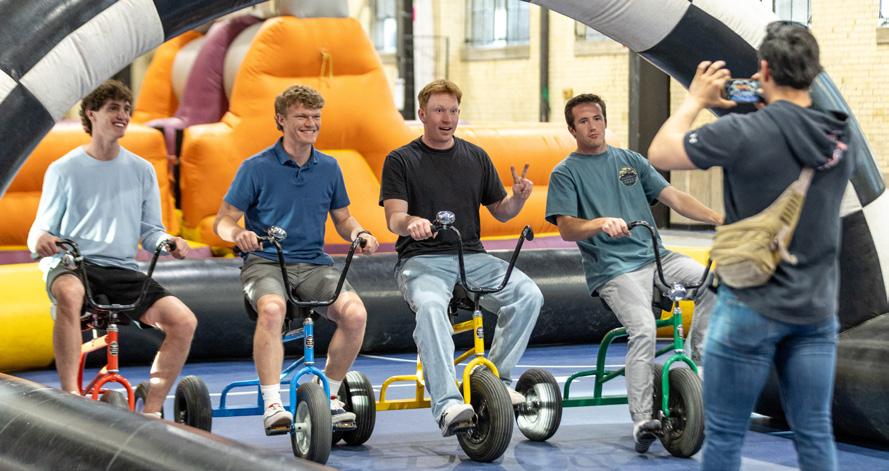

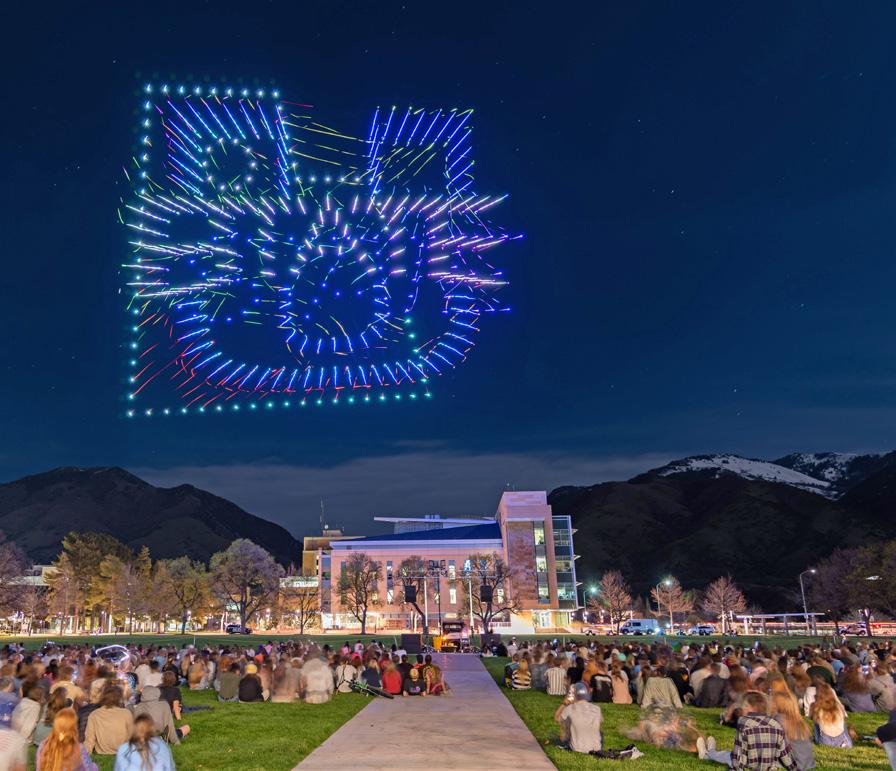
crowd and helps people look forward to something at the end of the semester,” Harris said.
The night ended with an Aggie Dance Party in the TSC Ballroom, a drone show on the Quad and True Aggie Night on the Block A.
Charlotte Stanford, sophomore studying communicative disorders, said she likes the event because everyone can have fun.
“I feel like the End of Year Bash is a good way to meet new people,” Stanford said. “It’s fun with lots of things to do and lots of ways to engage with everyone. There is something for everyone to enjoy during the event.”
Peterson said many students hope to keep being able to attend this event.
“USU should definitely keep holding the End of Year Bash every year,” Peterson said. “I know tons of people love coming to it and look forward to it at the end of a long school year.”
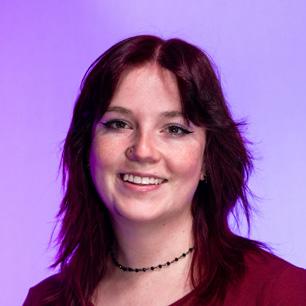
Natalie McKee brings music from around the world to our little corner of Utah, whether it’s K-pop, Anatolian rock, Nigerian rap or something else.
Expand your music horizons with “Beyond the Quad” every Monday from 8-9 p.m. on Aggie Radio.

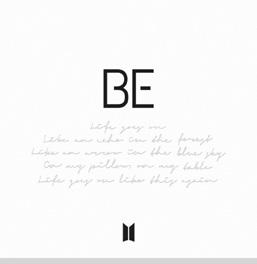


Samantha Isaacson is a junior majoring in journalism with a double minor in art and psychology. She loves to read and spend time outdoors.
— sam.isaacson@usu.edu

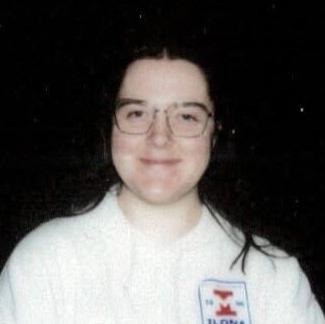




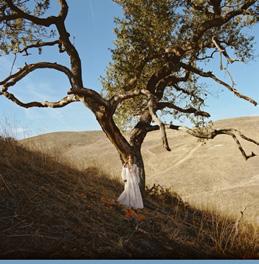

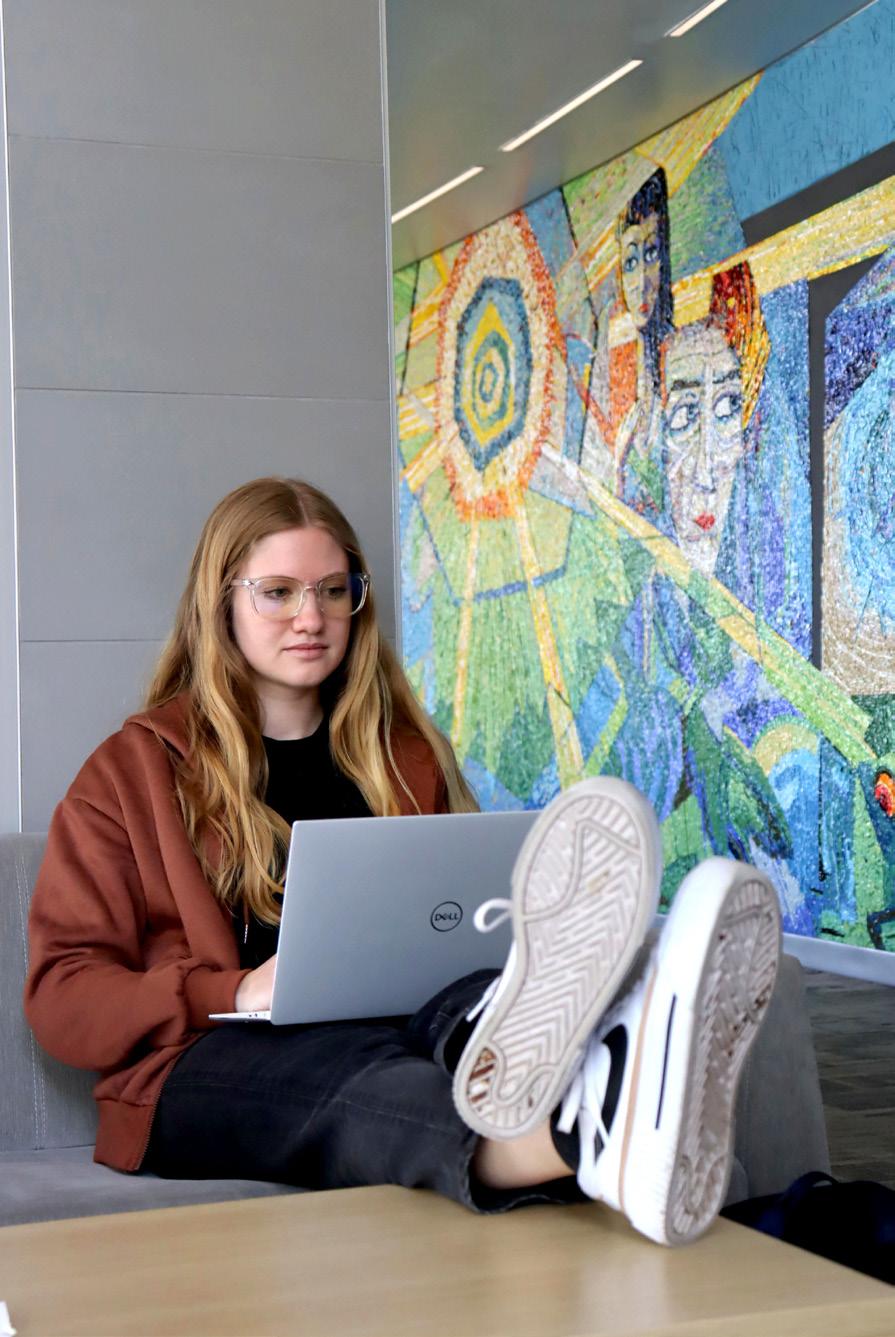
BY Kensington Clements Coral Rasmussen, a sophomore at Utah State University, was studying for her finals in the S.J. and Jessie E. Quinney Biology and Natural Resources Building on Tuesday, April 8. Coral grew up in upstate New York and is studying Public Relations. She said that her favorite finals hack is “Try not to be too stressed about it. Study and do what you can, take time to know your stuff.”
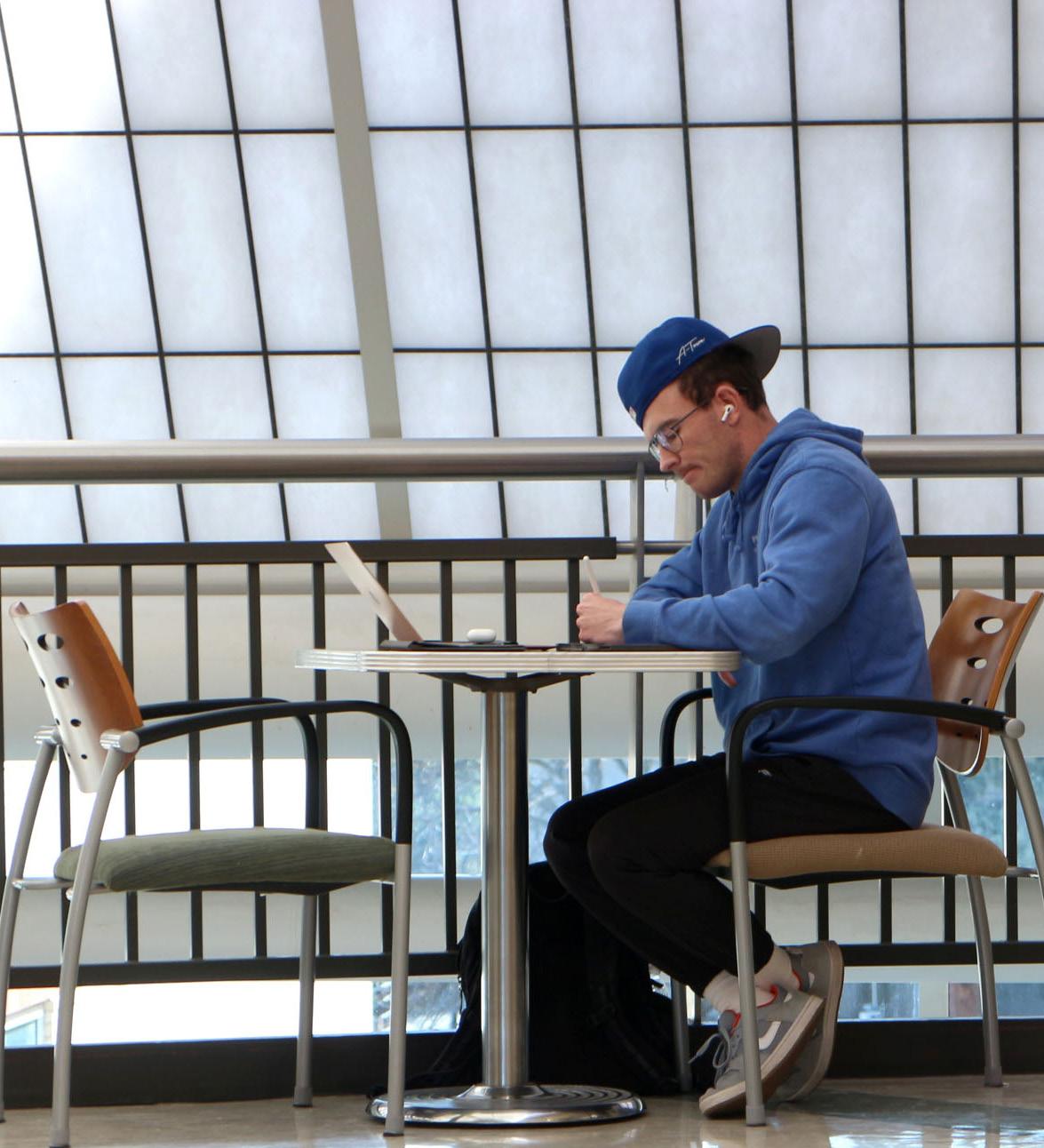
KaeRa Davis, a sophomore from Roy, Utah, studying Vocal Performance at Utah State University, has a go to hack for finals week. KaeRa says to, “Listen to classical music when you study.”
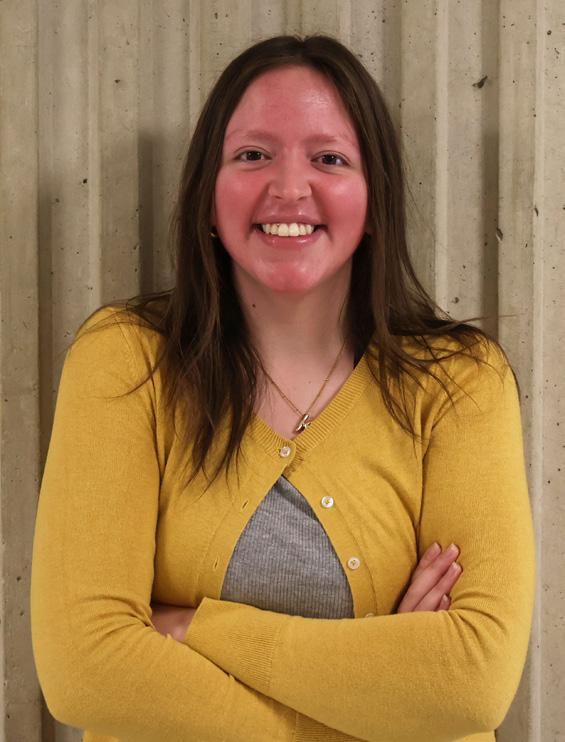
Shaylee Nielsen studies in the Emma Eccles Jones Education building. The Sandy, UT native is a senior studying Communication Disorders and Deaf Education. She said, “I will write down all of my important vocab words on cards, then record myself saying it so I can listen to it while I walk around. It just helps me keep in mind what I’m learning.”
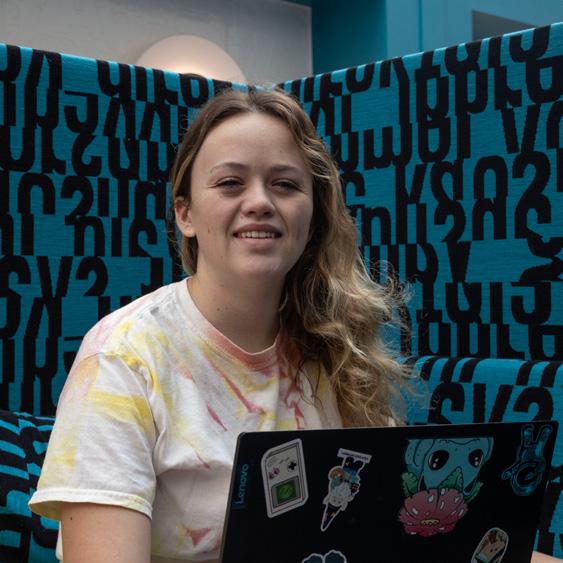
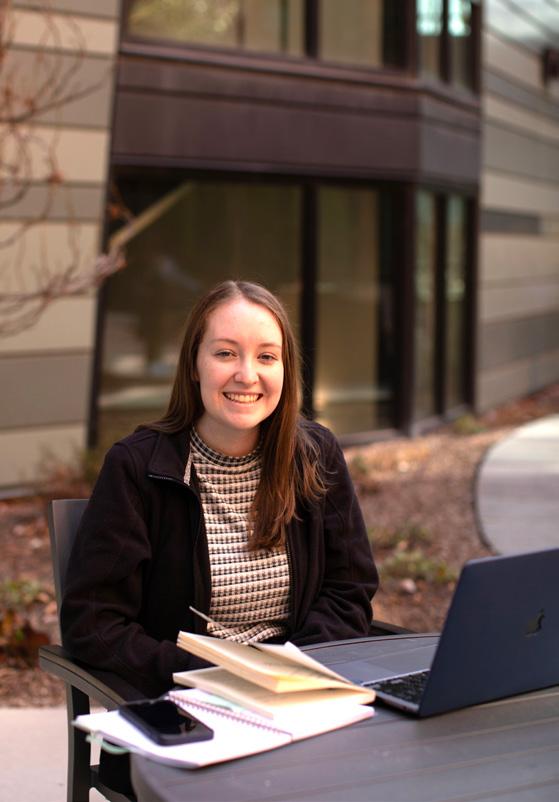
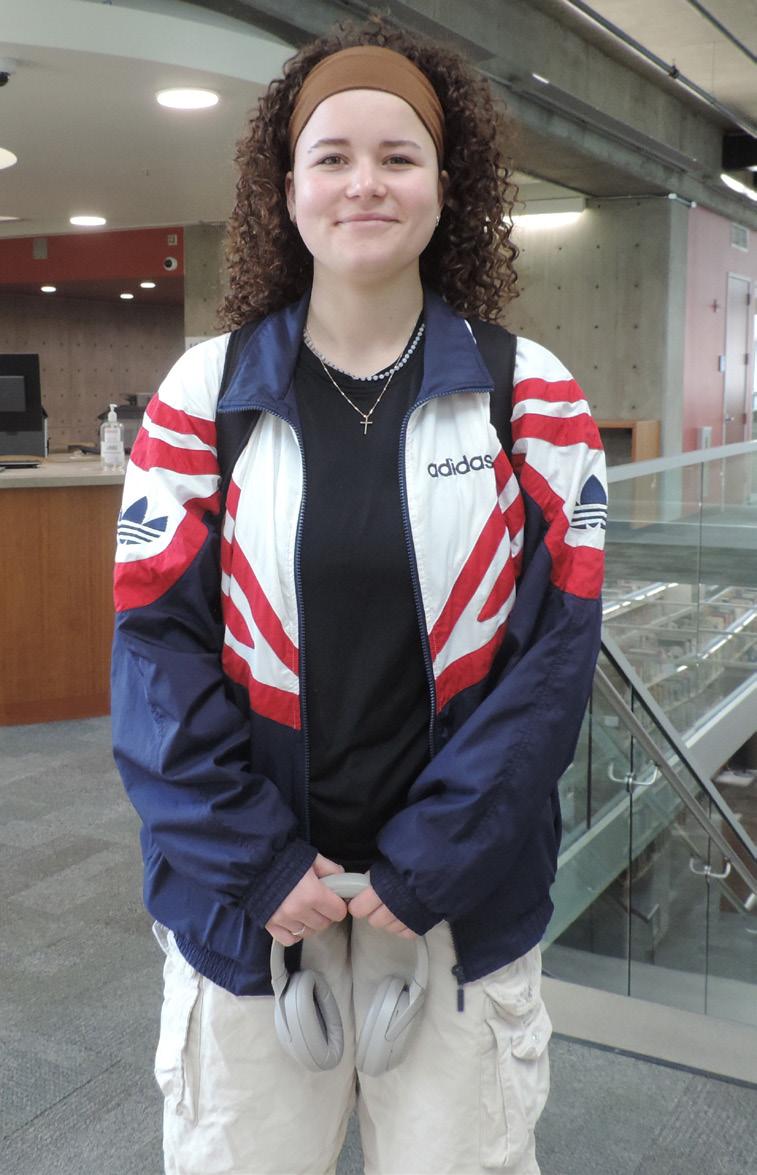
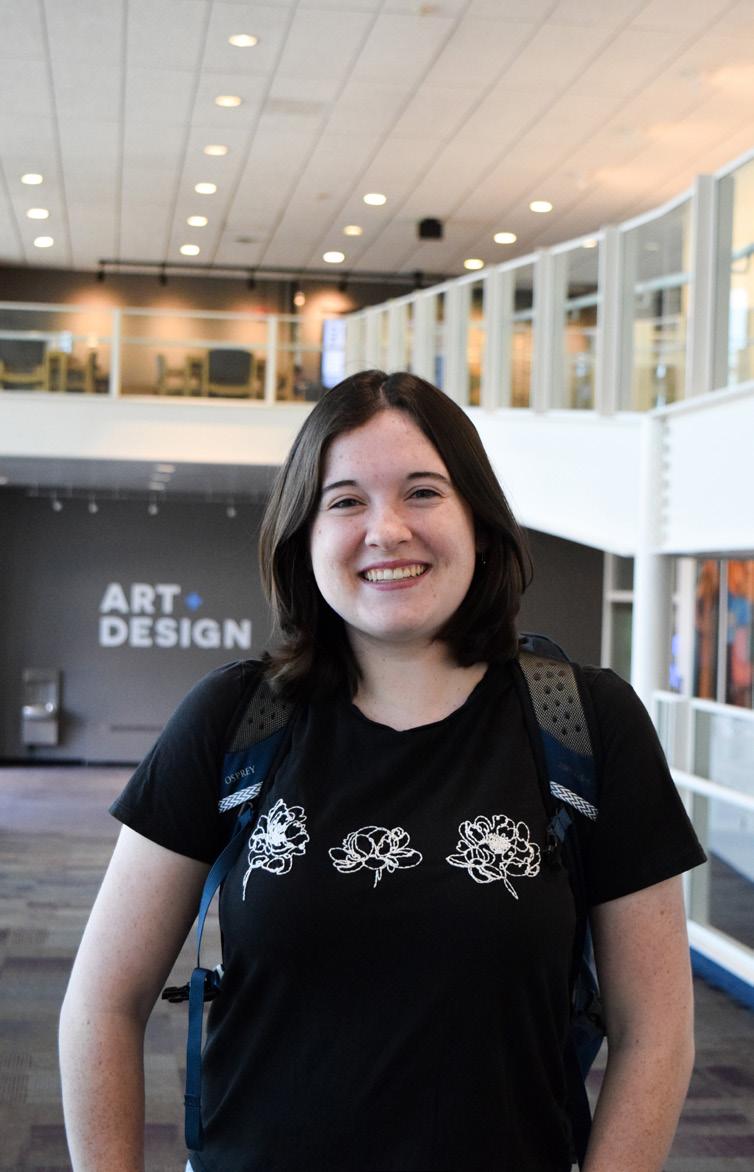
a
their finals week hack “is finding new study
Hopkins said “studying in my room not super beneficial because I get distracted by other things I could be doing, but by finding new study spaces, I feel I get more done efficiently with less distractions.”
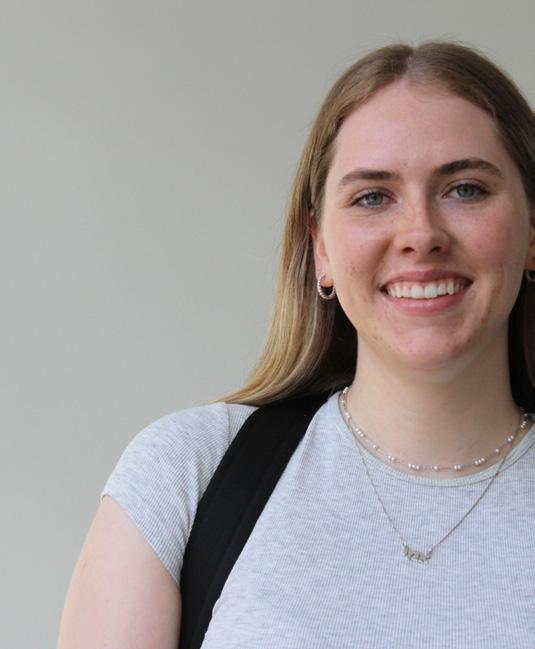
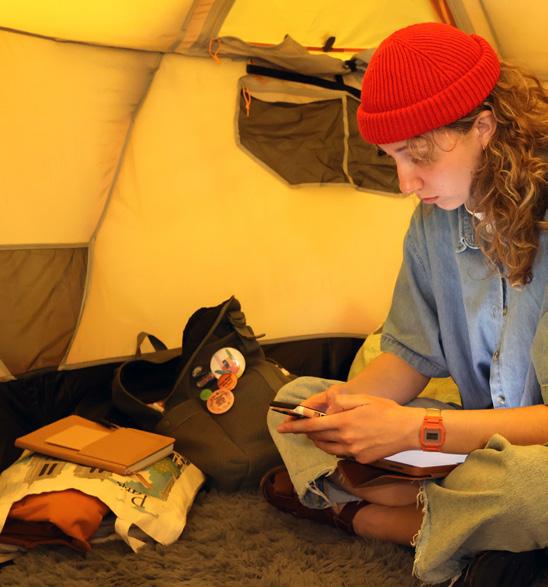
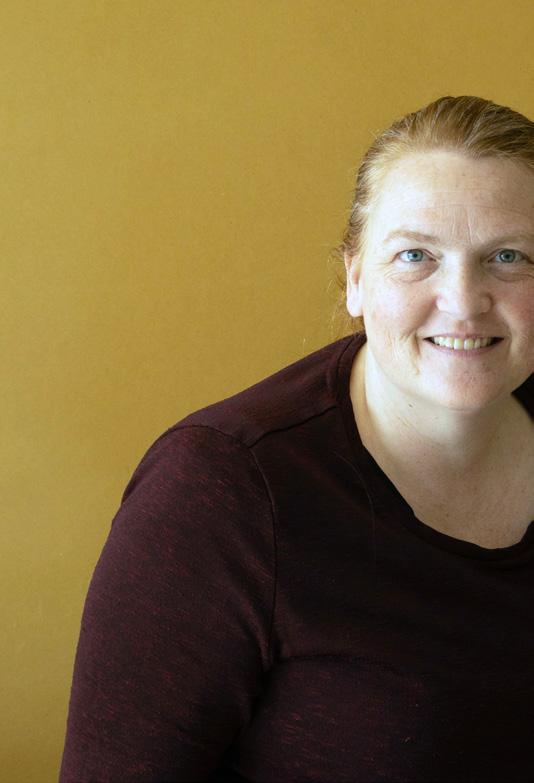
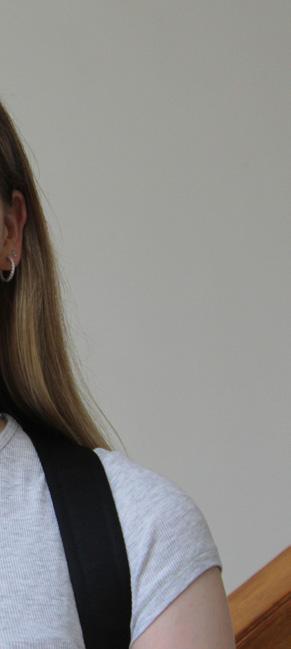
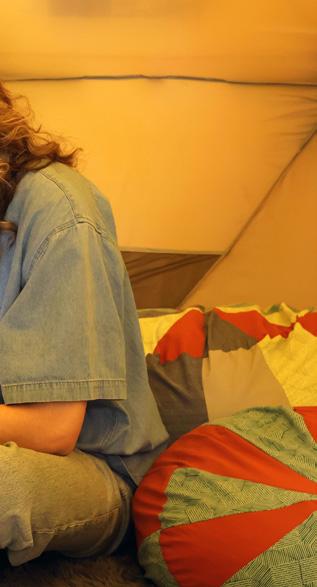
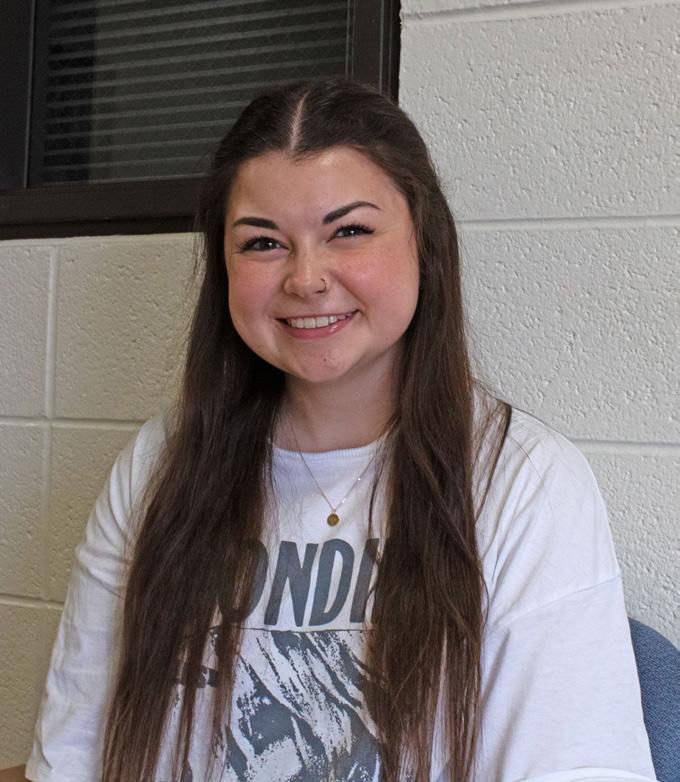
Maren Kraudy is a current freshman at Utah State University. She is from Omaha, Nebraska currently studying in the communicative disorders major. While passing through the C. Anthon Ernstorm Nutrition & Food Sciences building, she was asked about one hack she has for the approaching finals week. She said “study breaks are really important! Also just getting, I guess, a sweet treat for motivation sometimes too!”
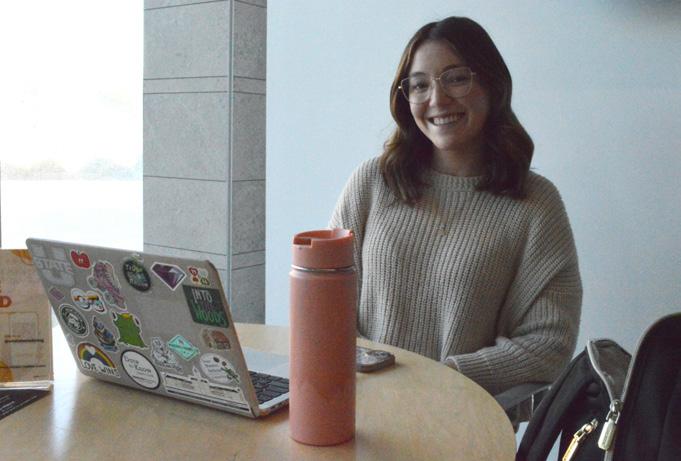
a
sits studying quietly at the Emma Eccles Jones Education Building. She tells students that the key to a successful “finals season” is to use the Pomodoro method and listen to bacground YouTube ambience. “Just look it up in YouTube,” says John, “there are plenty of options.”
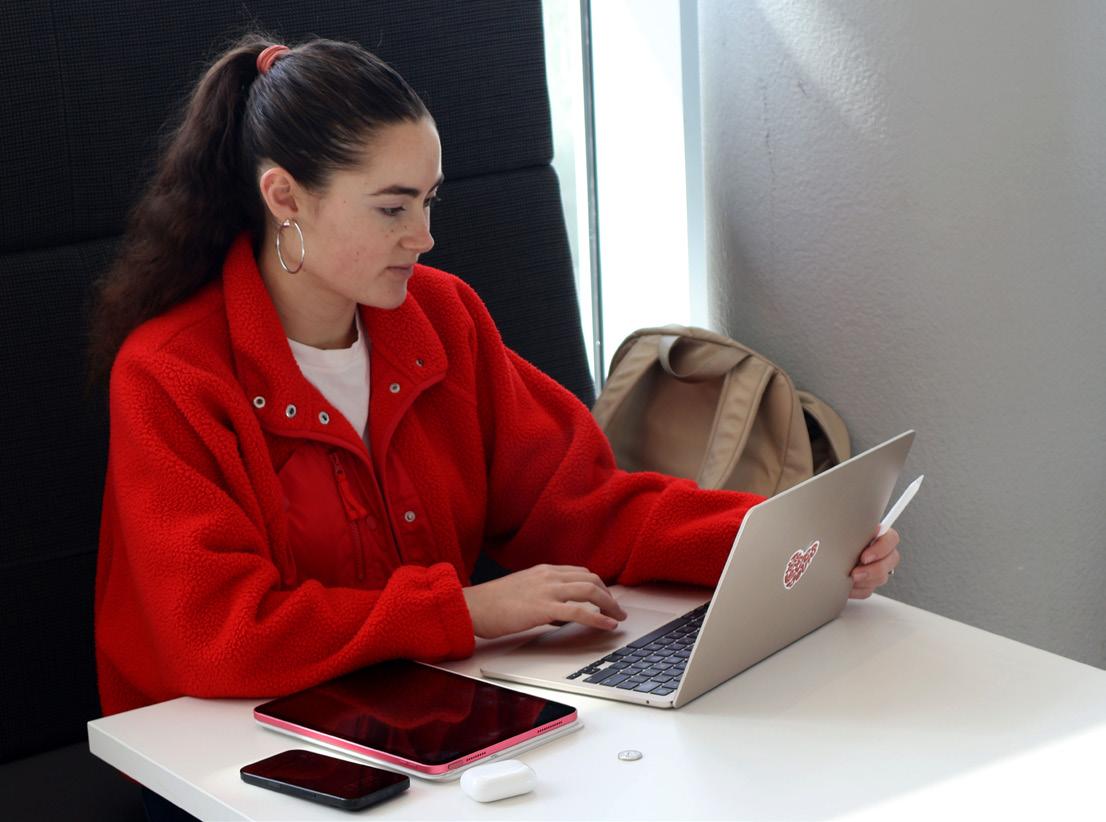

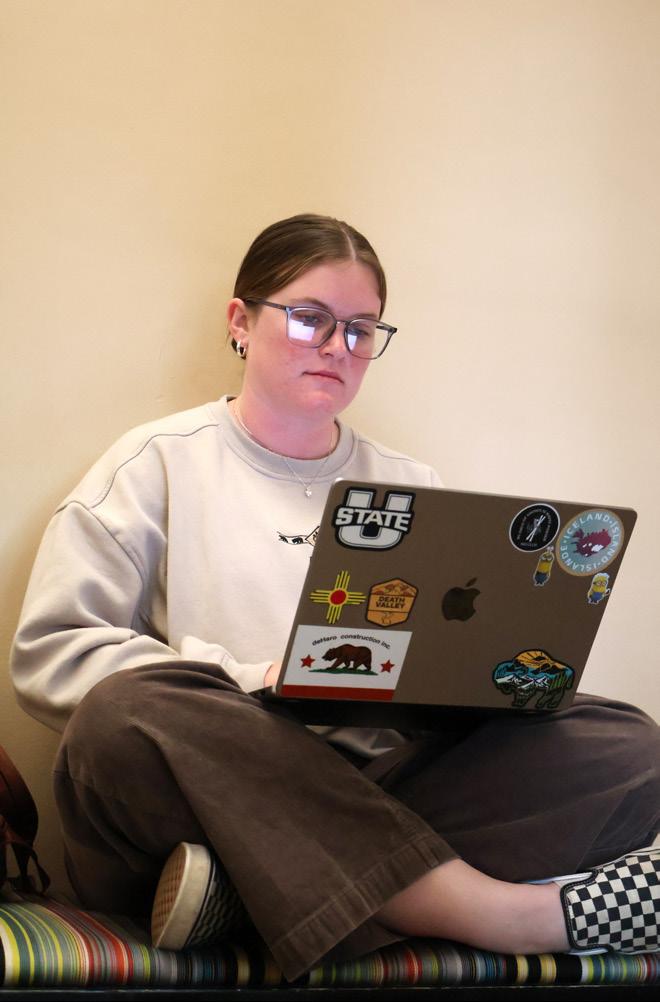
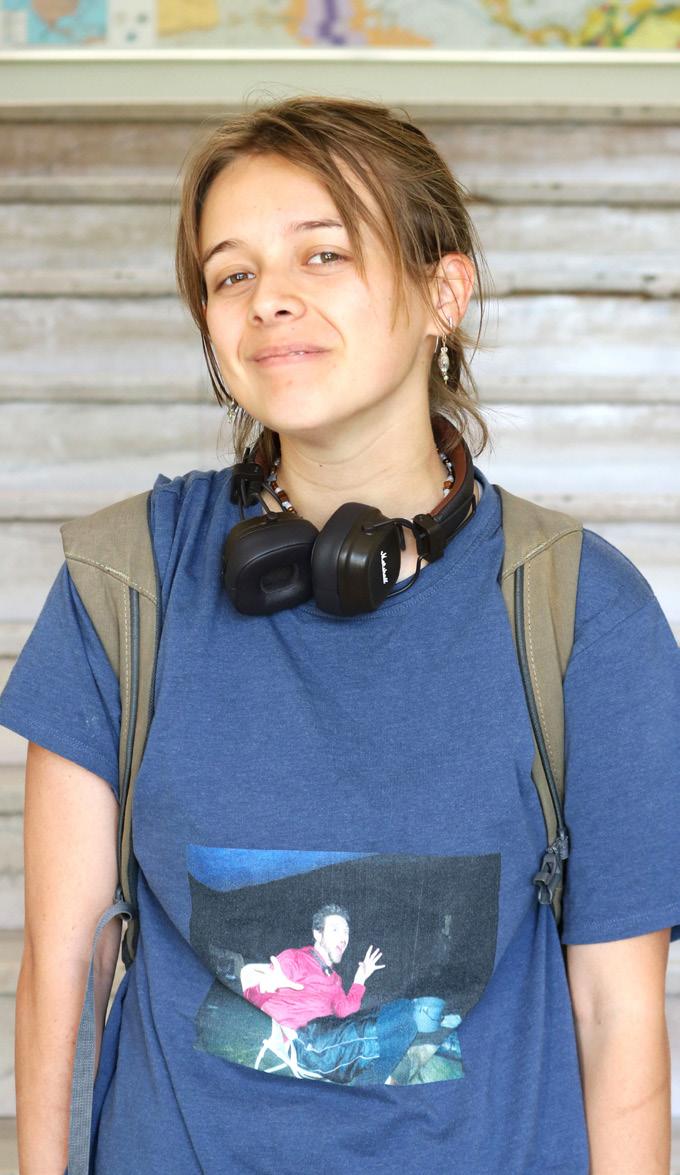
Gwen Bassett, a sophomore from Austin, Texas, studies Environmental Science at Utah State University. When asked about her finals week strategy on April 4, 2025, in the Geology Building, she said, “I’m a sophomore, so I don’t really know—I guess probably the Pomodoro Technique. You just set a timer for 25 minutes, then take a 5-minute break. It helps you stay focused and motivated.”
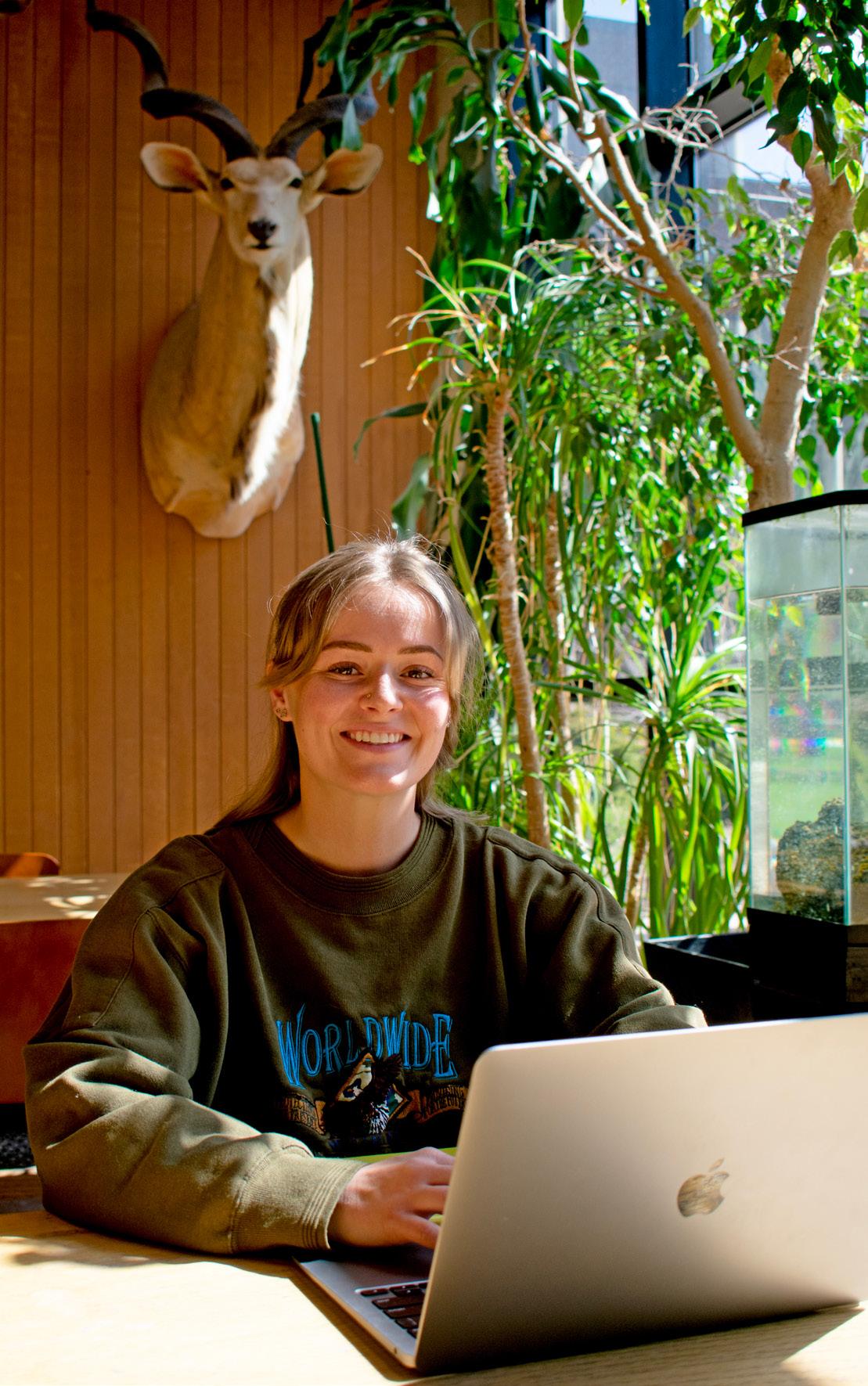
going to put it on
*Photos submitted by sutdents of
By Rain Schenck STATESMAN REPORTER
On a fall afternoon, Amber Brocoff walked into practice at Aggie Legacy Fields unsure of what to expect. She had never played rugby before — or any physical contact sport. She didn’t even have cleats. Still, Brocoff decided to give the Utah State University Women’s Rugby Team a shot with the hopes of keeping up her competitive spirit and finding a community of like-minded athletes. Just a few drills in, she walked off the field with what she called a “rugby player’s dream”: a black eye.
Just like that, she was hooked.
Brocoff didn’t come to USU expecting to fall in love with rugby, but now, in the heat of her second season on the team, she’s all in and plans to play until she graduates with a degree in nutrition science next spring.
Originally raised in Las Vegas and then Draper, Brocoff first discovered USU during a softball camp. While she ultimately decided not to pursue collegiate softball, something about her visit to USU stuck with her.
“I fell in love with the campus,” Brocoff said. Looking to get involved once she arrived, Brocoff attended a USU Campus Recreation event featuring club sports in the fall of 2024.
“I talked to Rachel [Billings]. She said, ‘Come out,’” Brocoff said. “And I just fell in love. I loved everything competitive about it.”
That story isn’t unfamiliar to others on the team. Falling in love with a new sport in college is a common experience for the women’s rugby players, said head coach Alia Stubbs. Most athletes on the team haven’t played rugby before, and some haven’t even competed in sports at all.
“You should give it a try,” Stubbs said, urging those considering joining. “And then you’ll be hooked, and you’re never going to leave.”
Maddy Martin, teammate to Brocoff and vice president of the team, didn’t come from a rugby background either.
“I honestly joined initially to stay in shape and meet people,” Martin said. “The community it’s brought me is the biggest thing that’s kept me excited about the sport — excited about school.”
The community that keeps Brocoff and her teammates coming back is unlike anything she’s ever experienced. “We practice to play with our teammates, not by ourselves, which is something I think every team could learn from,” Brocoff said.
With participation in the club being voluntary, even for Stubbs, what keeps teammates returning is the team’s culture of having fun, competing and winning a lot, according to Stubbs.
Volunteering her time to give back to the program she once poured so much into as a player, Stubbs sets an example players like Brocoff recognize as being “for the love of the game.”
“I love the girls,” Stubbs said. “I didn’t want the program to die.”
Stubbs played three years of rugby for the women’s club team, even competing at nationals with the club her se-
nior year. The program means more to Stubbs than just playing rugby, she said.
“It teaches you a lot of really good things,” Stubbs said. “It teaches you that it’s okay to be a girl and that you can be big and burly but also pretty and dainty and that your body is strong and can do so many amazing things.”
The confidence the athletes describe from playing rugby comes from the unity of the sport. It’s competitive and aggressive, and according to Martin, players have to be good at a variety of things.
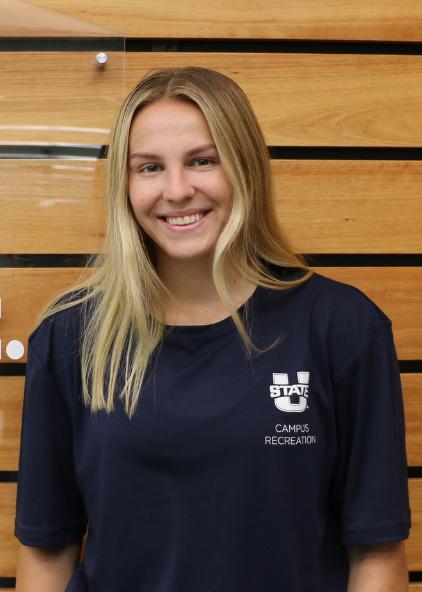
“You have to be fast,” Martin said. “You have to be strong. You have to be good at handling the ball.”
Skills like that take time to learn, but Martin said the club is always willing to take on women who don’t have a background in sports, as long as those athletes, like Brocoff, are willing to learn.
That willingness to learn combined with confidence is required for rugby and is what makes Brocoff such a great player, Stubbs said. She’s eager to learn and won’t stop working at something until it “clicks for her,” Martin said.
These traits are what the club presidency and Stubbs are looking for in new club members. Displaying a perfect rookie attitude in her willingness to learn, contribute, meet new people and bring high energy is what sets Brocoff apart from usual rookies, Stubbs said. Brocoff has played in the back position this season, uti-
lizing her speed and athleticism from her background as a softball player and powerlifter.
“The really beautiful part about rugby is that you can play no matter what size you are,” Stubbs said. “There is a specific role you have on the team for each body size.”
That integral part of rugby, combined with the work of the team leadership, has made an environment where the players have become best friends, Brocoff said.
Along with her “go-getter” attitude, Stubbs said Brocoff has found her role is to adhere to what the team needs her to be.
“To go out there and give my best,” Brocoff said. “Even if I’m not the best.”
With the help of a positive environment and “aggressive” play, according to Brocoff, the team has found success this year in their conference.
Taking first place in a tournament this season down at the University of Utah, the Aggies unexpectedly blew their competition out of the water, Martin said.
Taking on 12 other teams on April 5, the Aggies hosted the biggest women’s rugby club tournament in the west with hopes of making women’s rugby more popular in Logan and for girls in general, Stubbs said.
According to Stubbs, the Aggies continue inviting more athletes like Brocoff to play in the hopes of adding to the team dynamic and bringing in a diverse group of athletes to compete.
According to Brocoff, her journey — starting from zero experience to becoming the team’s Rookie of the Year — proves rugby as a whole, and especially the USU women’s team, welcomes everyone.

Rain Schenck is from Syracuse. She’s a senior at USU studying journalism and communications. If she’s not writing or reading, she can be found at any competitive event or game night, throwing a ball or yelling at a card game.
— A02339636@usu.edu
By Mark Greenwood STATESMAN REPORTER
Utah State University’s student section is recognized throughout the country as one of the best. The die-hard student fans work together to create a gameday atmosphere across the board of USU Athletics.
The energy of the HURD would not be possible without the student leaders who volunteer to run the organization. USUSA executive director of athletics and campus recreation and a team of students make up the HURD Committee. The executive director oversees club sports and the HURD Committee. They also act as a student voice representing all students in an athletic capacity. Committee positions open every year, with the executive director voted on by students during the USUSA election cycle.
With elections recently completed, the position is set to turn over this month.
Dallin Wilson, graduate student finishing a master’s in data analytics, filled the position for the 2024-25 year. Wilson graduated with a bachelor’s in statistics last year. “I got onto campus fall of 2020, and things looked a lot different than they do now. Obviously, there weren’t a ton of events. Athletic events had limited attendance — people wearing masks, everything,” Wilson said in an interview with The Utah Statesman. “It was a very interesting freshman year, but I fell in love with Utah State Athletics and supporting all of our teams very quickly.”
With Wilson set to graduate, Ben Burdette, junior studying healthcare management, is the executive director taking his place.
“This is my second year on the HURD Committee. I was on it last year, my freshman year, and then this year, I served as the operations director,” Burdette said in an interview with the Statesman. “I’ve been working super closely with Dallin as far as the operations side of the HURD Committee goes… I’m super excited to take another step up and serve as president next year.”
Wilson joined the committee the following year and has been involved with the organization since.
“The first year, I was just super excited to be there helping out with whatever,” Wilson said. “The second year, I was the director over game day... That’s always been something I’ve been super passionate about — is improving the atmosphere on game day for our teams but also for our students.”
As executive director, Wilson coordinates the efforts of the committee to offer food and swag giveaways, events, electric gameday experiences and HURD Premium.
“We have a HURD Committee of close to 35 people this year, and they’ve all put in so much hard work behind the scenes,” Wilson said. “We’re always brainstorming. We’re talking about new ideas — new things we can do. A lot of the stuff that we did this year, those were ideas that we started talking about two, three, four months in advance.”
Though the HURD receives some funding through USUSA student fees, a large portion of their funding
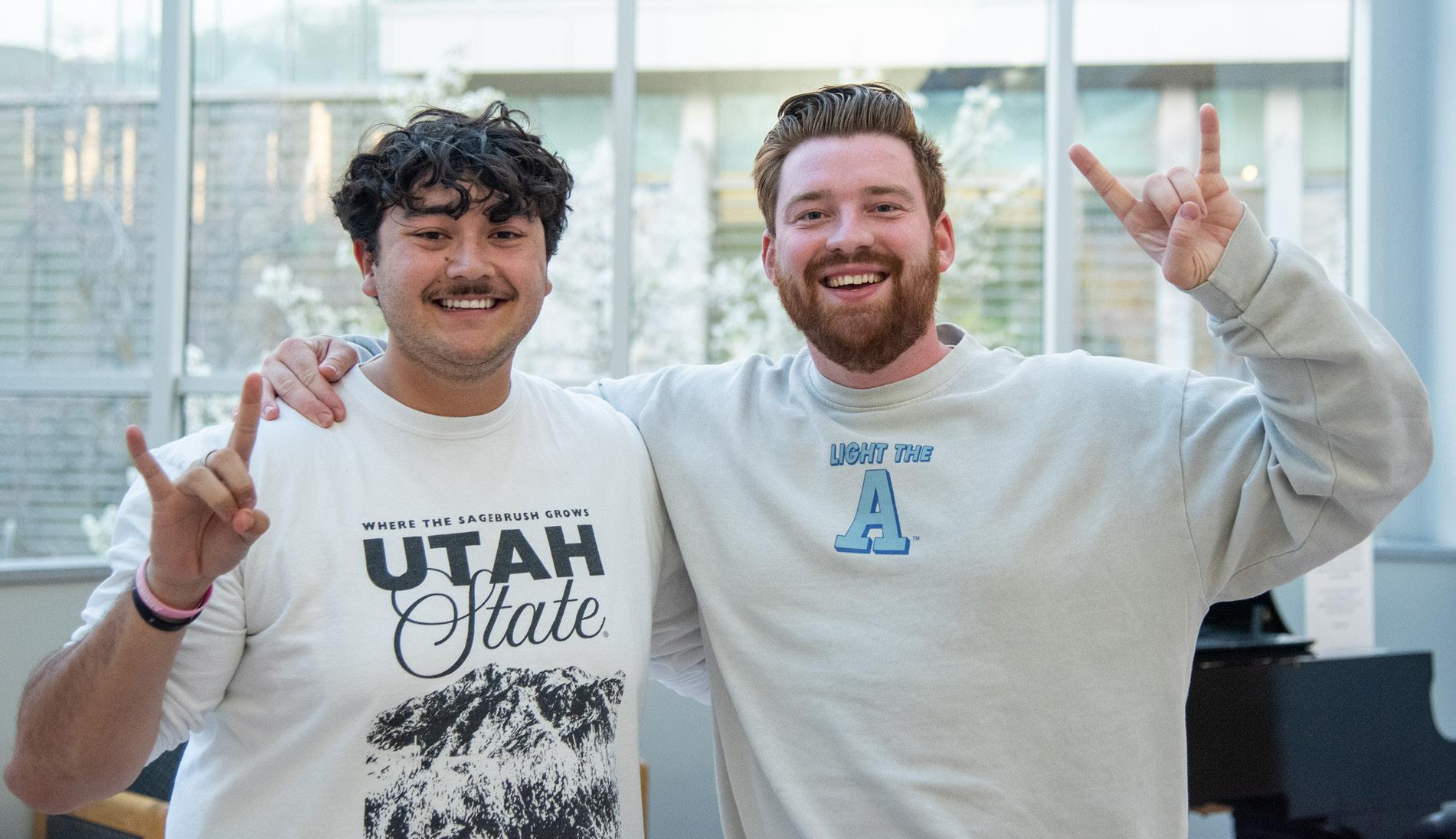
for giveaways and events comes through the HURD Premium.
“HURD Premium in itself is a huge fundraiser for us,” Wilson said. “We try to make it give back to all the students 10 times whatever they put in. That really helps us kick-start the year and get things going a little bit, and hopefully, the benefits are worth it to everyone who signed up this year.”
In his role as operations director, Burdette worked on the HURD’s larger events such as Campout on the Quad, Midnight Yell, Powderpuff and various watch parties. He has been intricately involved in the planning and implementation of HURD Premium.
Official inauguration for Burdette was on April 18, but the work for next year began before that, starting with the committee. Burdette has named his directors for the upcoming year and selected 32 students to fill the committee after over 50 students applied.
Applications for the committee will open again in the fall. Burdette will look to add three to five students, allowing incoming students the opportunity to apply.
“We try to stay away from super large committees,” Burdette said. “That way, everyone can get an equal amount of work, and people can feel like they’re actually contributing.”
This season, the HURD set a high standard for next year’s leadership, but Burdette said he is up for the task.
“Dallin has done a phenomenal job this year revamping the HURD as far as giveaways and HURD Premium,” Burdette said. “I’m for sure going to continue that with the amount of giveaways and stuff we’re doing at basketball and football and soccer and softball games.”
Burdette plans to do a partnership with local vendor
Tys Dyes, which is working on an exclusive HURD Premium shirt.
“We think that that’s going to be able to attract more sophomores and juniors to purchase HURD Premium so that we can do more and give more back to the students,” Burdette continued.
HURD Premium has about 1,800 members this year, and Burdette is hoping to eclipse 2,000 in the year to come.

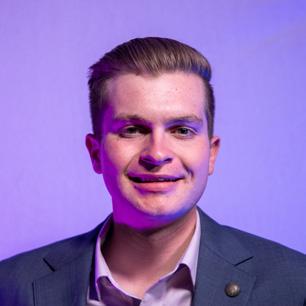
Mark is a sophomore at USU studying economics and finance. He is an avid Los Angeles Dodgers fan and loves playing tennis and skiing.
By Sam Goodman
Editor’s Note: Guest Columns and Letter to The Editors are published as submitted.
Utahns had a once in a lifetime to hear several prominent political figures speak about the change they believe in, and the hope for our country.
This year, Vermont Senator Bernie Sanders has been traveling across the country to give a series of speeches opposing the current presidency and its policies that have been enacted this year. Titled his “ Fighting Oligarchy Tour,” Sanders visited California, Arizona and this past Sunday, April 14 arrived in Salt Lake City to address Utah.
The attendance was over 20,000, all packed in the Utah University Huntsman center, featuring live music, along with other speakers before the Senator. Bernie Sanders heavily criticized Donald Trump over his policies and his relationships with Billionaires.
“For many years I have been talking about Oligarchy in America,” Sanders said. “I have to thank Trump for educating the American people on what Oligarchy is,” he said.
Sanders also went after the President’s relationships with the Billionaire’s Elon Musk, Jeff Bezos and Mark Zuccherberg.
“Right behind him are the three wealthiest people in America,” he said.
With the doors opening at three, and speakers starting at six, fans of Bernie Sanders waited in line for hours to hear his words. Student Coco Harward
and her friends were eager to hear how they can make a change.”
“I have loved politics since I was a kid, I am really passionate about finding little ways to change the world,” Harvard said. “I was the kid telling adults about the ballot.”
In a state that voted red, there was no shortage of Bernie Fans in attendance, complete with signs and shirts to cheer on their idol.
“I’ve been a fan of Bernie Sanders for his entire professional career and standing up for what he believed in, even though there were so many external barriers, he fought for people,” Harward said.
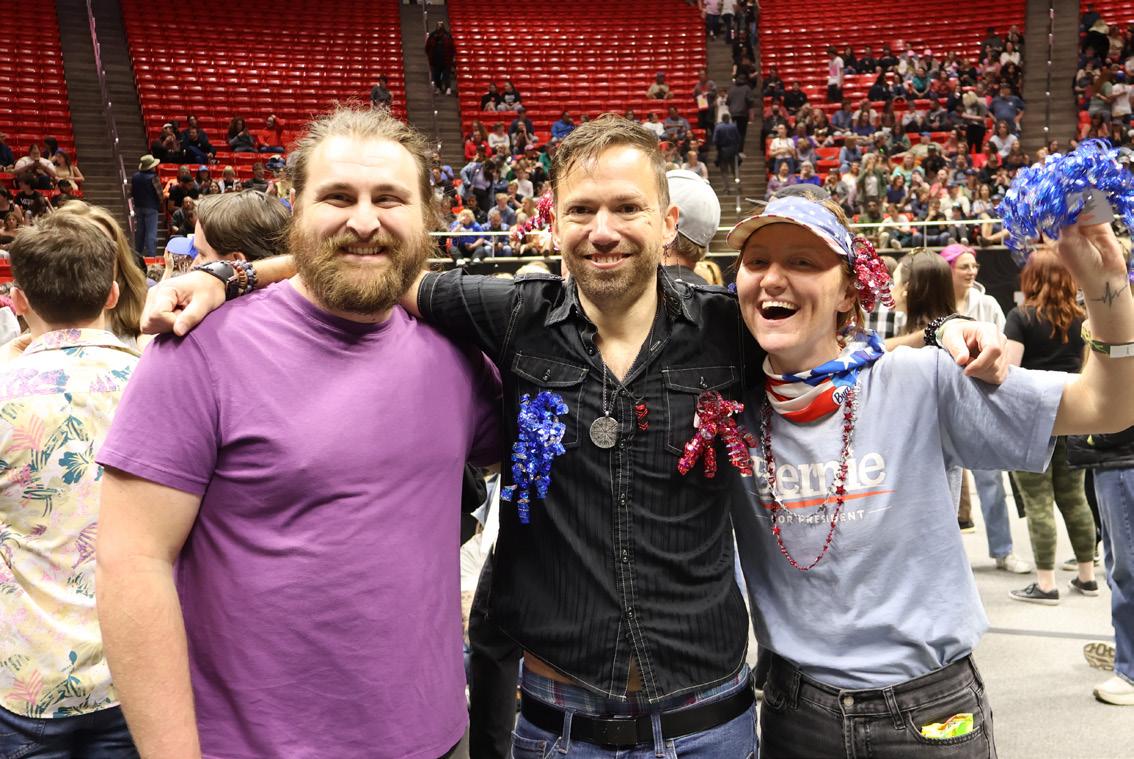
Congresswoman Alexandria Ocasio-Cortez was also in attendance, and the youngest woman in Congress ever had some strong words for the President, addressing the fiery Utah crowd.
“We have known that our political system has slowly but surely become dominated by big money and billionaires,” Ocasio-Cortez said. “Time after time we see how our government and laws are more responsive to lobbyists than to the will of everyday people,” She said.
Other speakers included activist Caroline Gleich, who ran for a Utan Senate seat last year unsuccessfully. She addressed recent events in Utah, as well as her support of a different healthcare system.

“If you work hard you should be able to breathe clean air, you should be able to see a doctor, you should be able to buy a home, and you should be able to retire with dignity. That is the promise we are fighting for, “ Gleich said. “ I ran because I saw our State and our Country going backwards.”
Attendees travelled from afar to hear the rally, including USU student Mya Karbasi, longtime fan of Congresswoman Ocasio-Cortez and Senator Sanders.
“I love the way he speaks and holds himself. Things should be for the people by the people. He doesn’t put himself on a pedestal,” Karbasi said. I felt hope, looking around seeing everyone with a similar mindset, ready to make a difference,” She said.
Ocasio- Cortez has been praised by Sanders and other colleagues for humble beginnings, and her quick impact on national politics. Mya Karbasi also sang her praises.
“I was getting full body chills when she was talking about her upbringing, coming from a family of immigrants, I felt really empowered,” Karbasi said.
One of the key points in Sanders’ speech was the wealth disparity in the nation, citing that Tesla CEO and Billionaire Elon Musk spent over 290 Million dollars on this past election, in which Donald Trump beat out Kamala Harris to win the presidency.
“We are living in the most dangerous moment in the modern history of this country,” Sanders said.
Sanders, being religious himself, also cited the sermon on the mount, and addressed Utah directly.
‘“treat others how you would want to be treated, be kind to other people so they will be kind to you. I know that in Utah and Vermont there are Millions of people try to do the right thing,” he said
On Monday, they continued the tour to Idaho, and with over 12,000 people in attendance, it was the biggest democrat-run rally since 2008
By Ella Stott STATESMAN REPORTER
Between 10-second quick changes, eight-minute rambling monologues, threesomes and murder, Utah State University’s production of “Or,” was absolutely hilarious and truly phenomenal. Rated the movie equivalent of R, the show brought edgy, adult humor to USU’s Black Box Theatre.
The play was written by Liz Duffy Adams and premiered Off-Broadway in 2009. Through a mix of modern and older dialogue and slang, it tells the story of Aphra Behn, a spy-turned-first-female-playwright in 17th century England.
The first thing that stood out to me about USU’s production was the setting. In the beginning, while Aphra is in prison after a mission overseas that went horribly wrong, the stage consisted of just a desk and white curtains. It emphasized the importance of writing right away, as that was the only focal point of furniture. However, as Aphra left prison and the play shifted to highlight her new home in London, stagehands revealed the set behind the white curtains in a dramatic pull. Candlelight and shelves of books filled the scene, giving it an old-England feel.
Now that she’s free, Aphra has written a few plays but is on the brink of her big break, as long as she can produce a play in one night to meet the deadline of London’s biggest theater company.
Seems easy enough. Well, surprise, it isn’t because the night she finds this out is also the night actress Nell Gwynne comes over, and Aphra is finding it hard to resist her charms. The two fall in love, which is further

complicated by the fact that Aphra’s former lover William Scott flees exile, and when the two reunite that same night, he reveals there is a plot to murder King Charles II in the morning. William, ever the double agent, may or may not be lying about his role in this plot.
No matter. Aphra can hold off on being with Nell for one night and still have time to write her play and apparently solve treason. It’ll be fine. Except she’s actually been in a secret relationship with the king this whole time, and who’s that knocking on her door? Of course, Charles himself.
As Aphra attempts to keep her relationship with the king secret, tries to figure out the plot behind his murder and works to both keep William hidden and figure out how to earn him a royal pardon, she also tries to romantically connect Nell and Charles so the three can be in a relationship together. To top it off, she has to write an award-winning, career-defining play in one night. It’s safe to say the play is nothing short of chaos.
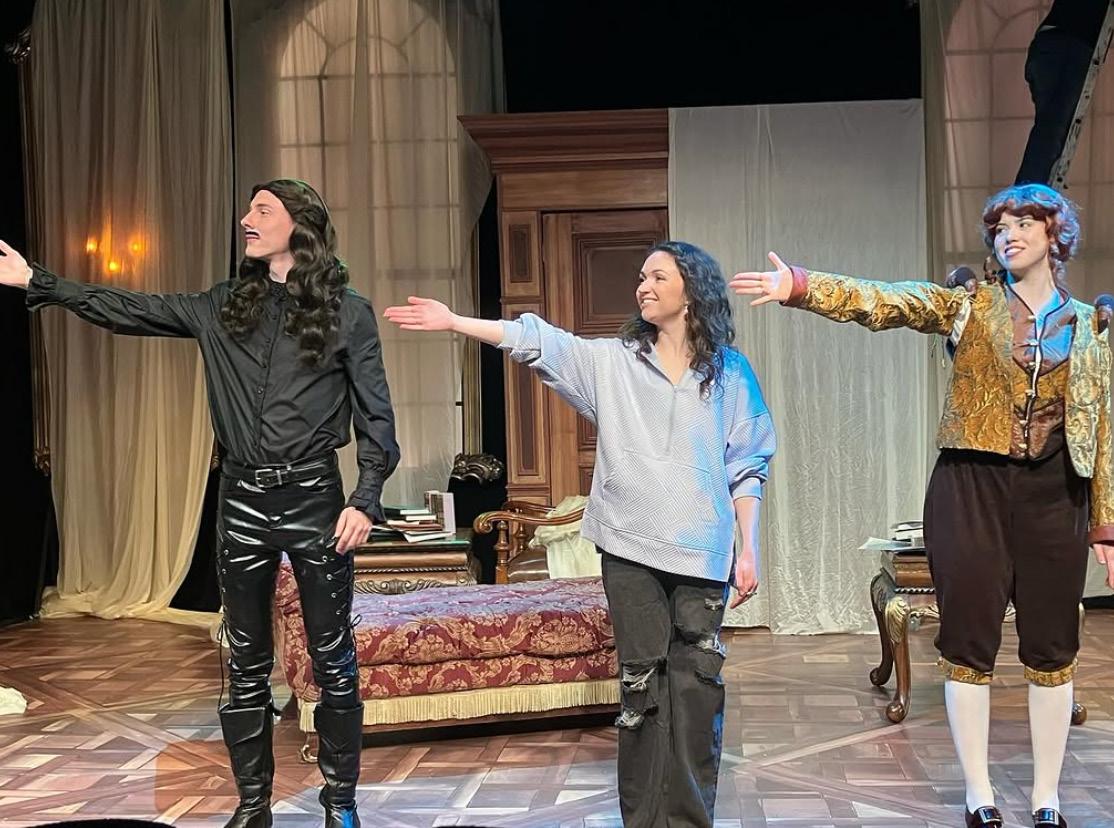
severity of everything happening, it was impossible to take your eyes off her.
Not only was this play humorous because of the circumstances, but the writing was so funny. There were so many one-liners that had the audience roaring, and there was never a dull moment.
Despite the play consisting of seven characters, it only hosts three actors, leading to the quickest costume changes I’ve ever seen. I kid you not, Jonah Newton switched from a half-naked, robe-draped costume as Charles into a wigless, tunic-and-boots-outfit to play William in no more than 10 seconds, appearing in a completely different spot on the stage. The actor also played the jailor in the beginning of the play, showcasing his range of acting ability.
Marin Robinson, who played Nell, was full of exciting costume changes as well, as she switched from the actress to Aphra’s handmaid to Lady Davenant, the theater’s representative, all in the course of two minutes. As Lady Davenant, she delivered an exceptional monologue of probably eight minutes long, leaving barely any room for breathing. Her characterization in each of these roles was incredible — at first, I couldn’t even tell they were played by the same person.
Mia Gatherum as Aphra tied the whole production together. Through her breathtaking stage presence, consistently scrambling to write lines in her play and humorous timing as the audience realized along with her the
It was so much fun to watch a production with three very talented actors. They each brought something so fresh and compelling to the stage, and the chemistry between the three made for a stunning performance.
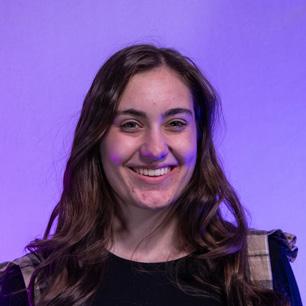
Ella Stott is a junior studying English. In her free time, she can be found playing “Mario Kart,” making a smoothie bowl or complaining that she actually doesn’t have any free time.
— ella.stott@usu.edu

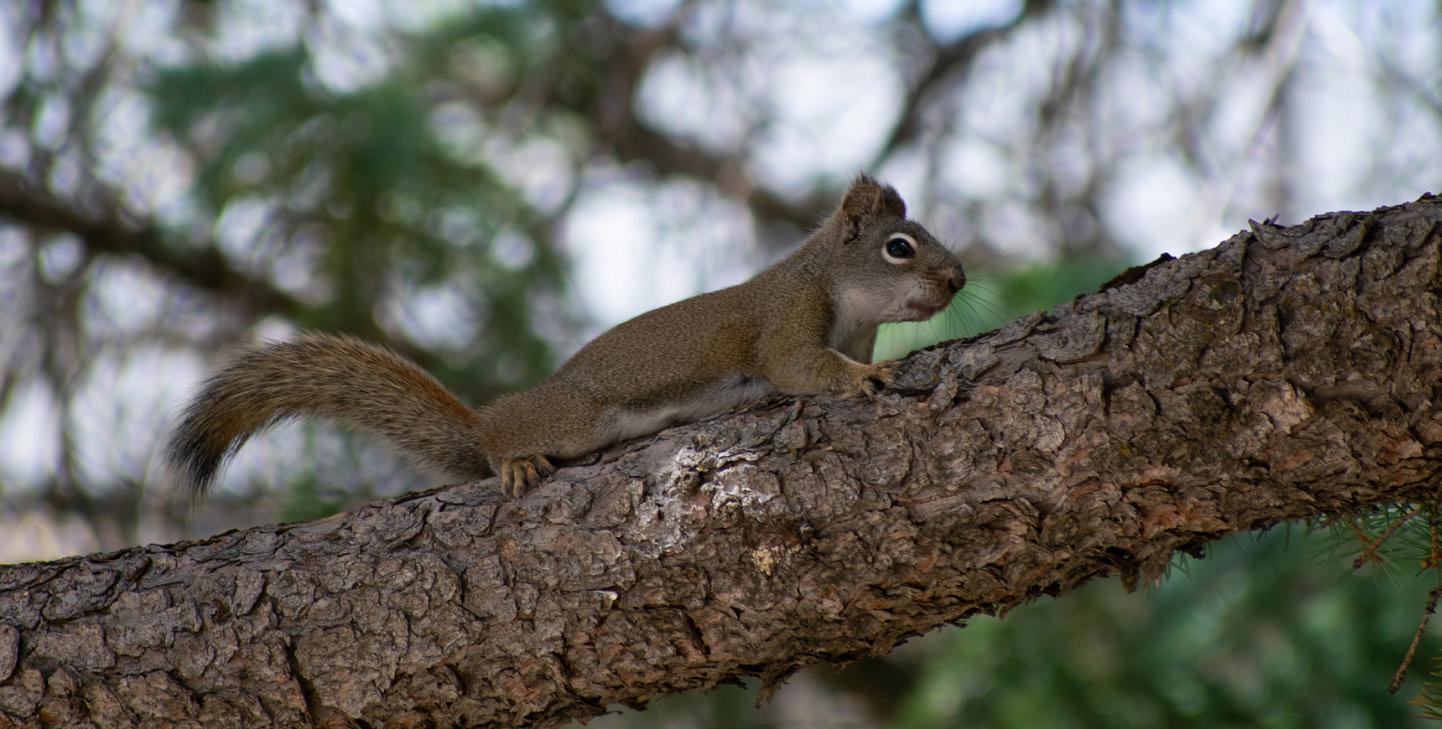
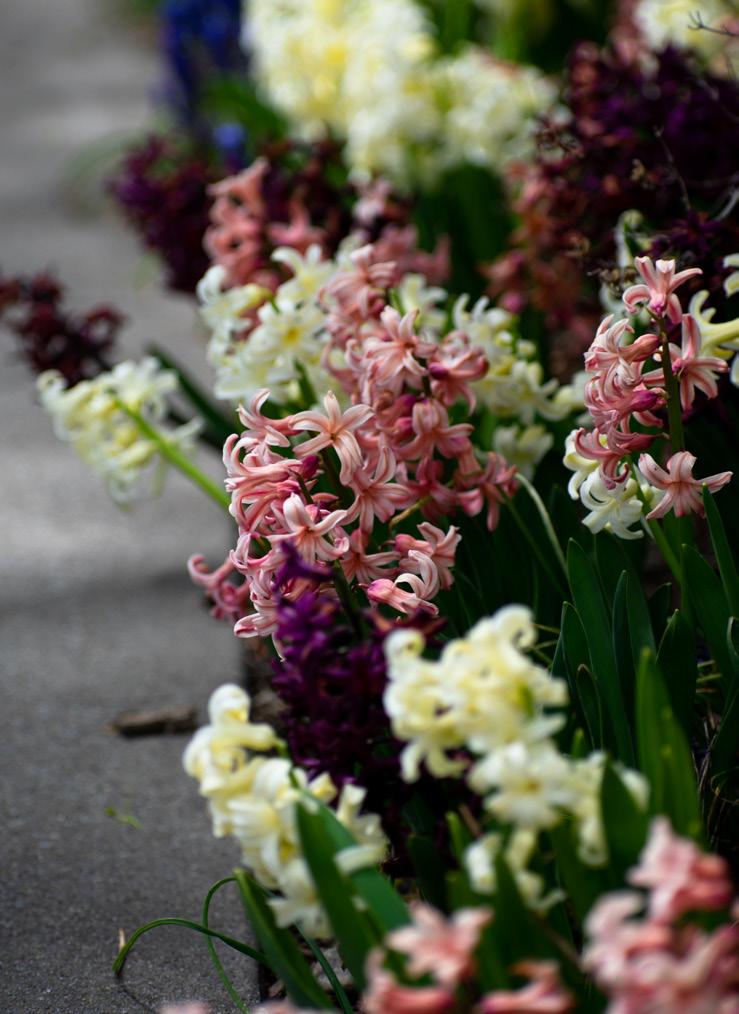

Elise Gottling is a sophomore at Utah State University studying Outdoor Product Design. She loves taking pictures of people, animals, nature, and anything else that catches her eye. Along with photography, she loves playing guitar, singing, and anything outdoors! — A02386895@usu.edu
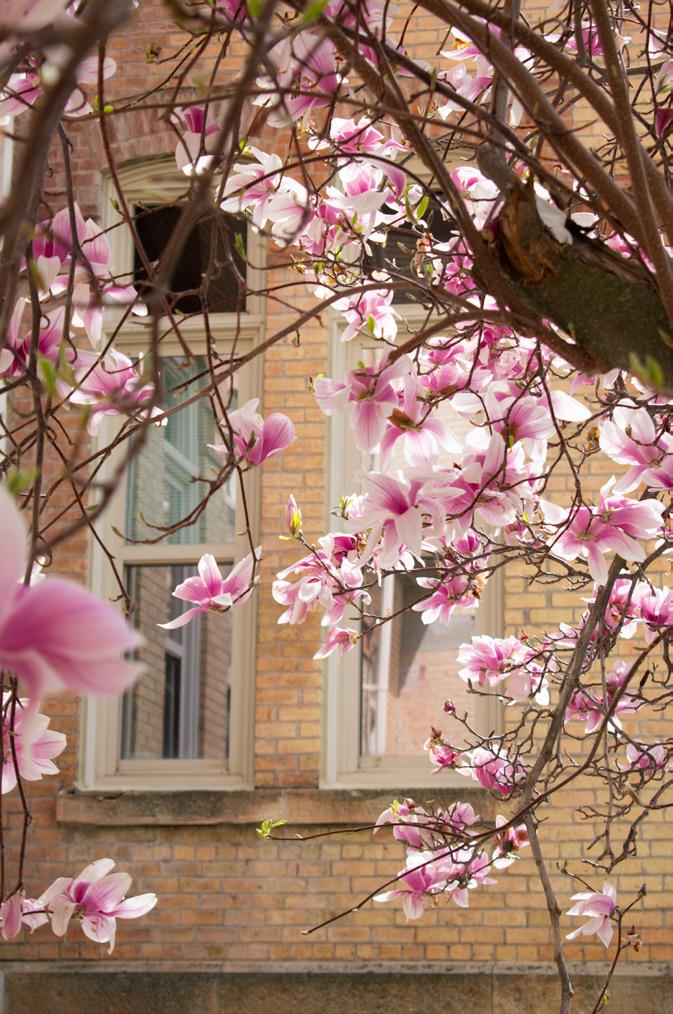
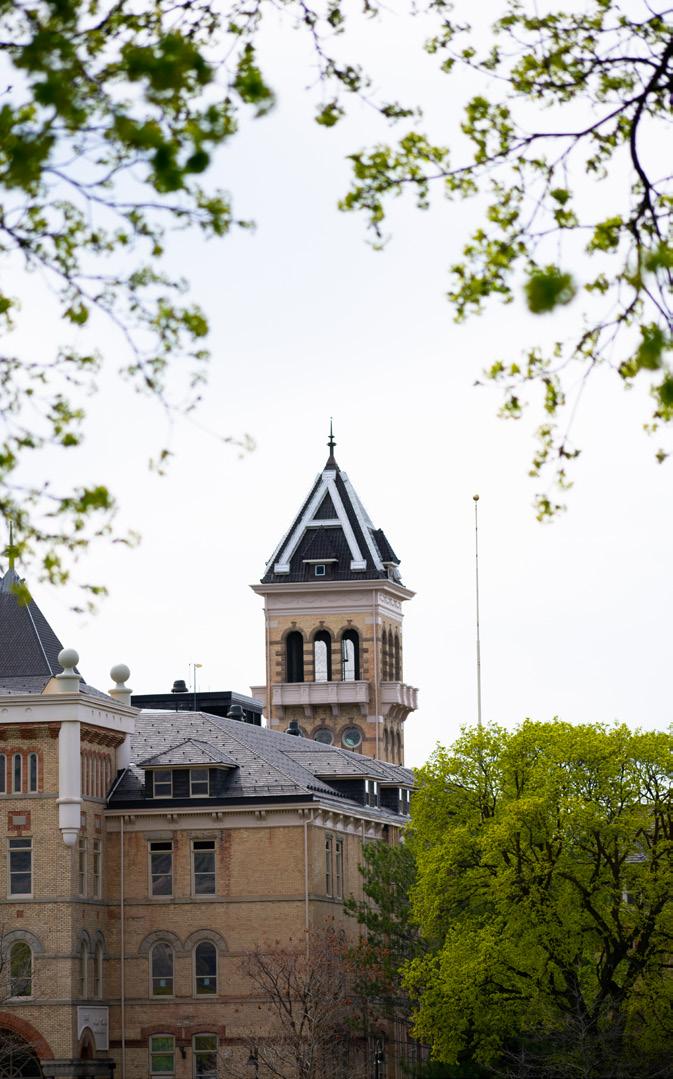
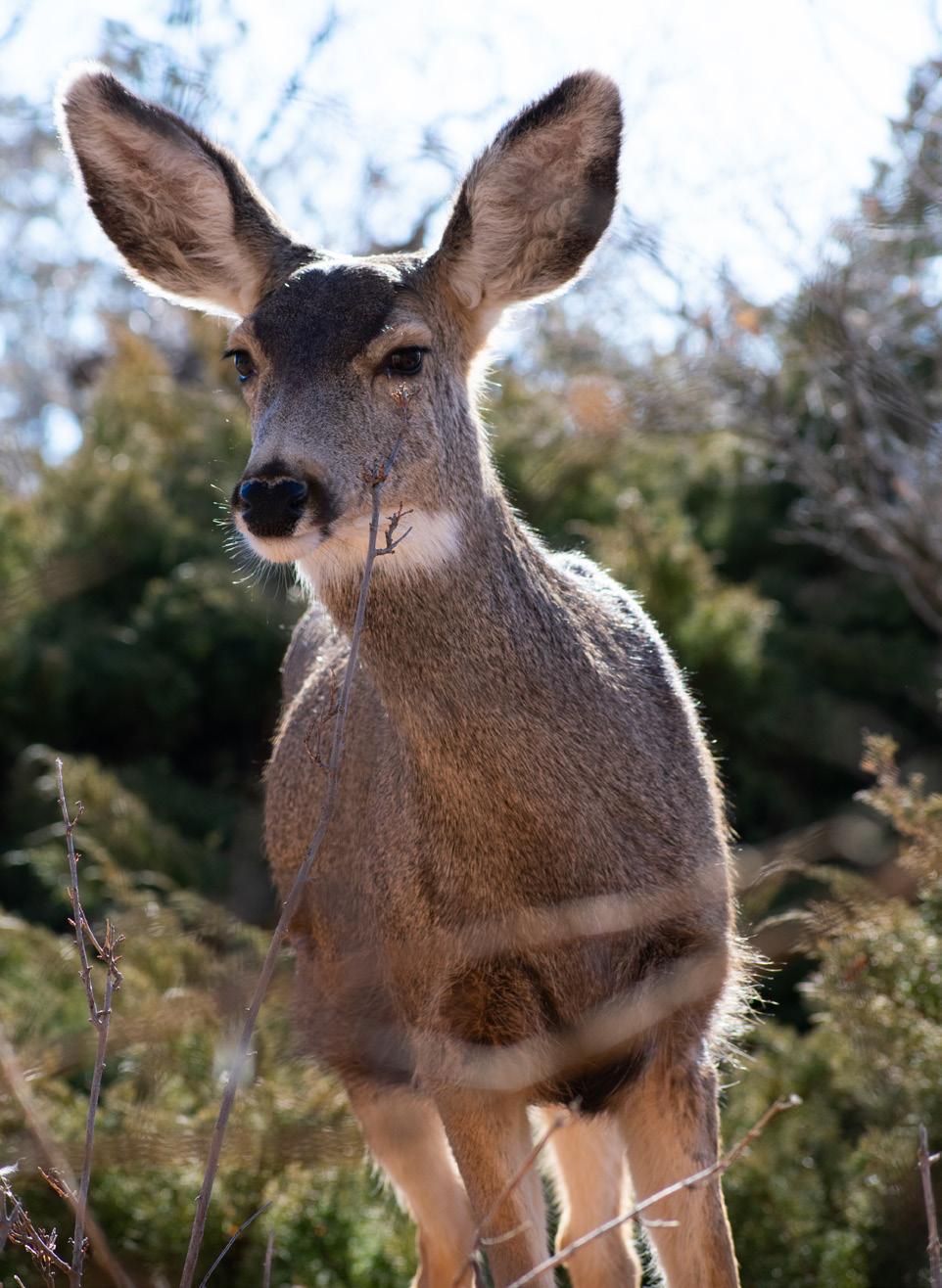
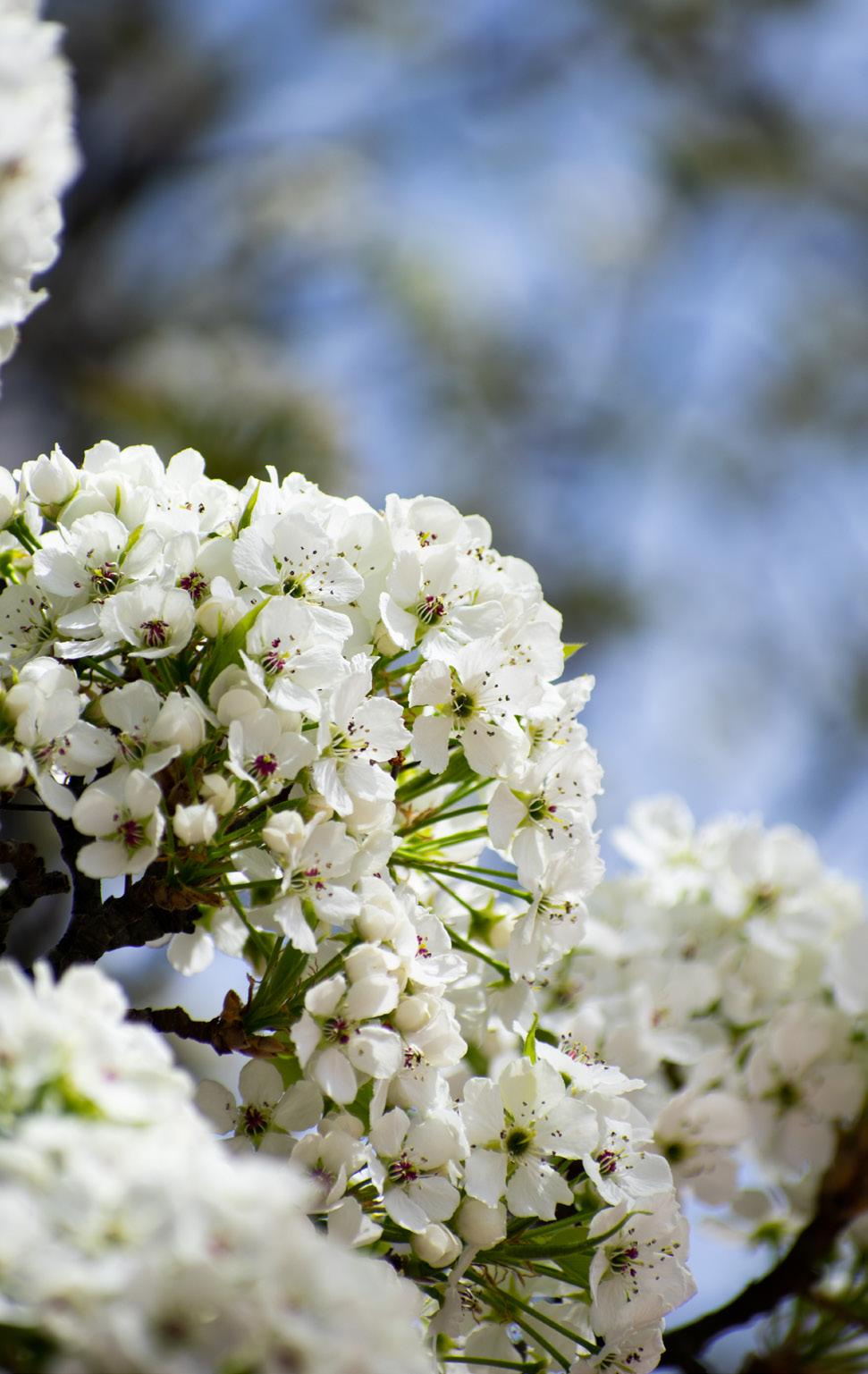
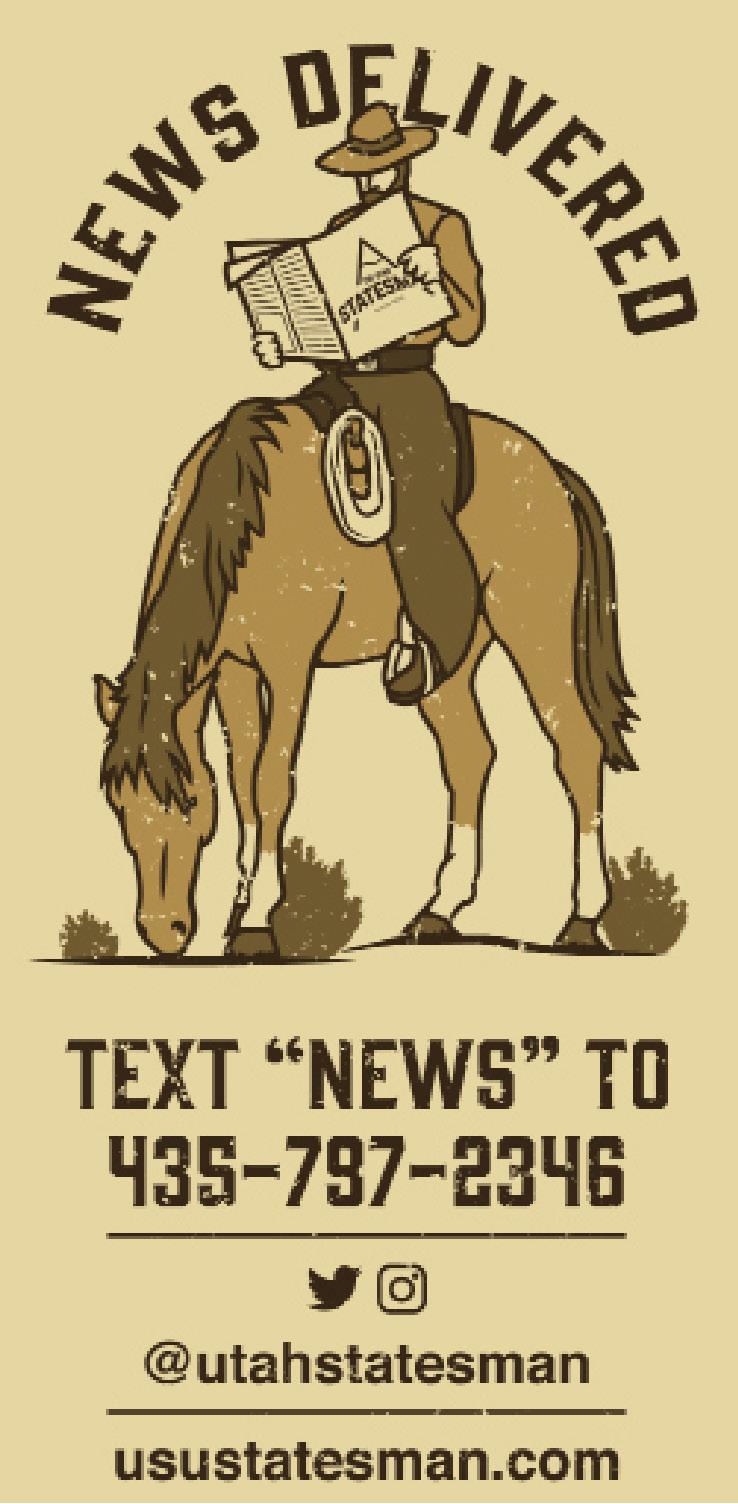
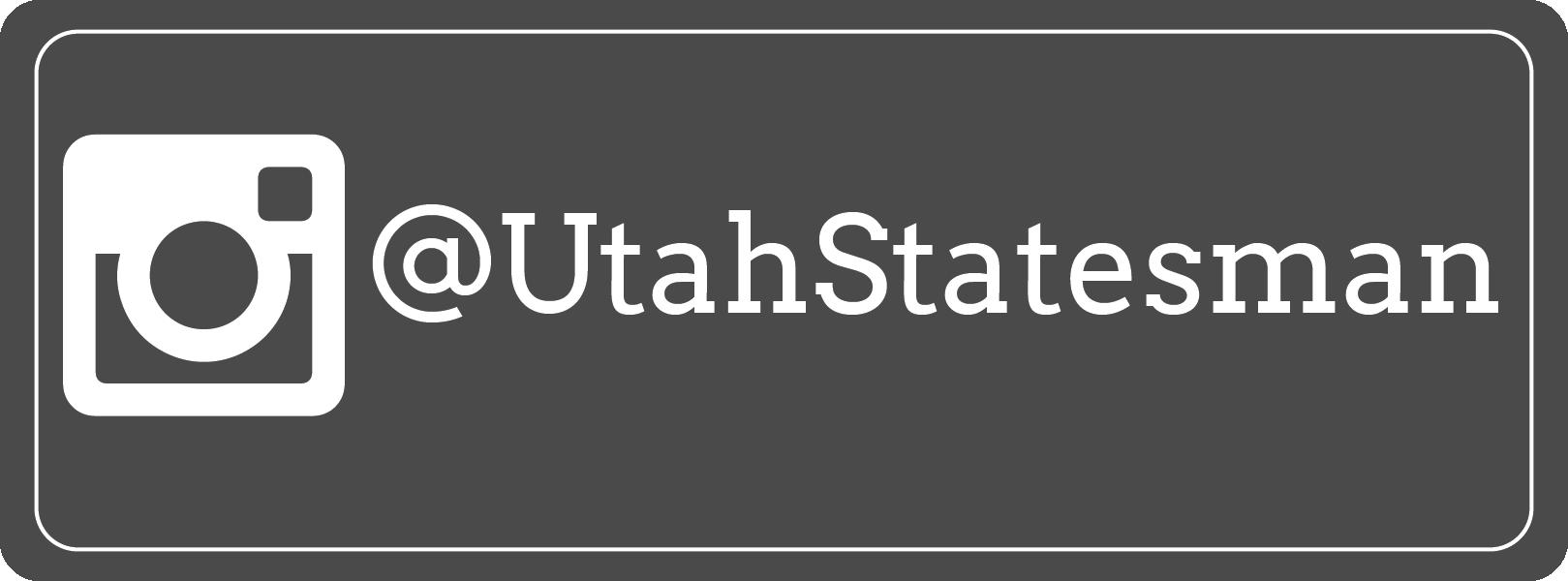
Sudoku puzzles are provided by www.sudokuoftheday.com. Last week’s solution:



